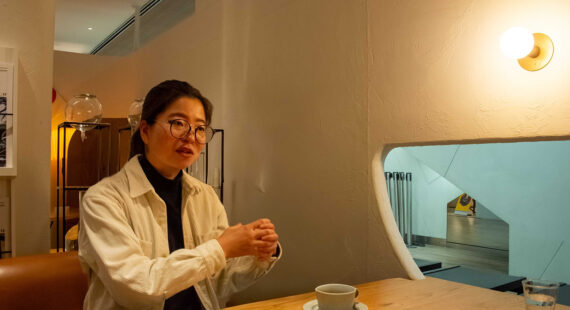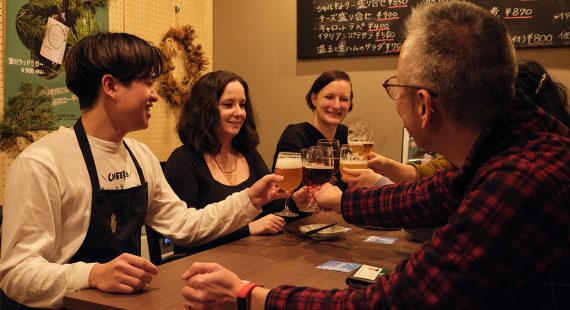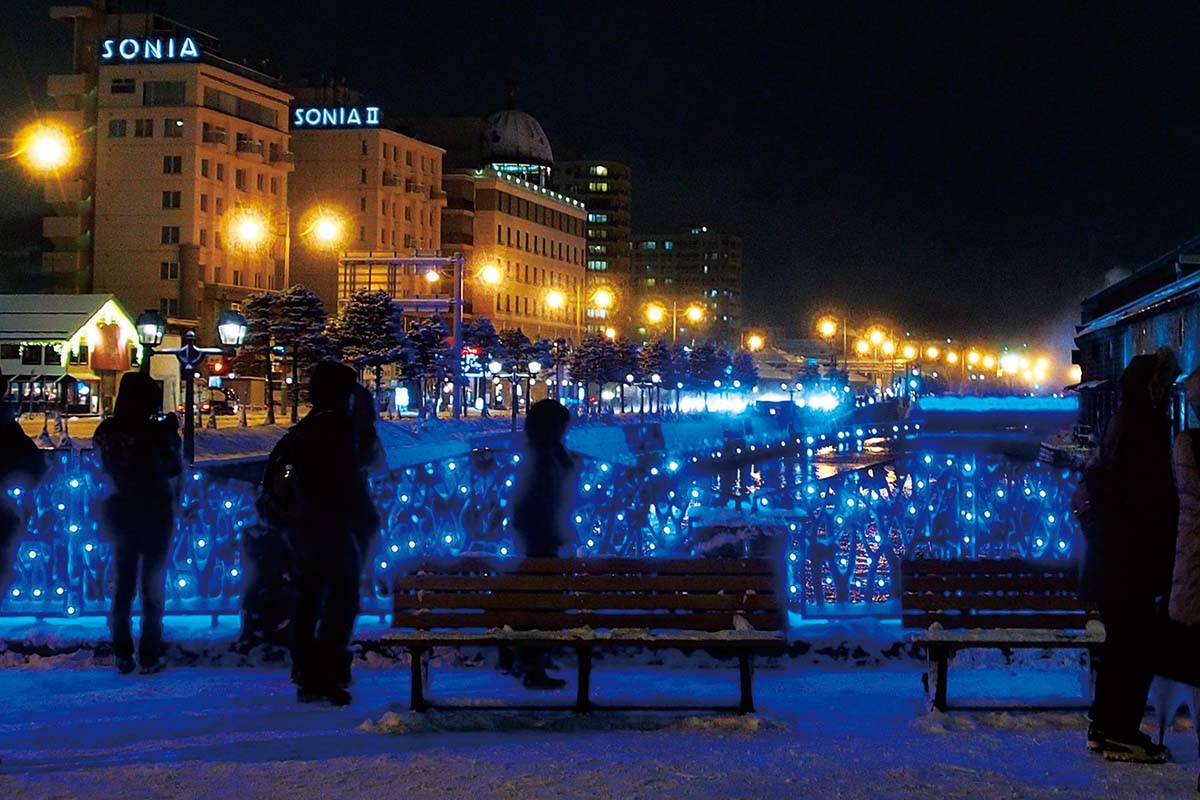
Otaru city is located in western Hokkaido, the northernmost island of Japan. It is one of the most famous Hokkaidoan harbor cities and it is a city with one of the longest histories in Hokkaido. As you might know, Hokkaido has not been a part of Japan for very long, only just over 150 years, but there have been Japanese settlers in the area of Otaru already since 1596. However, the actual Otaru city started to take its current form in the 19th century.
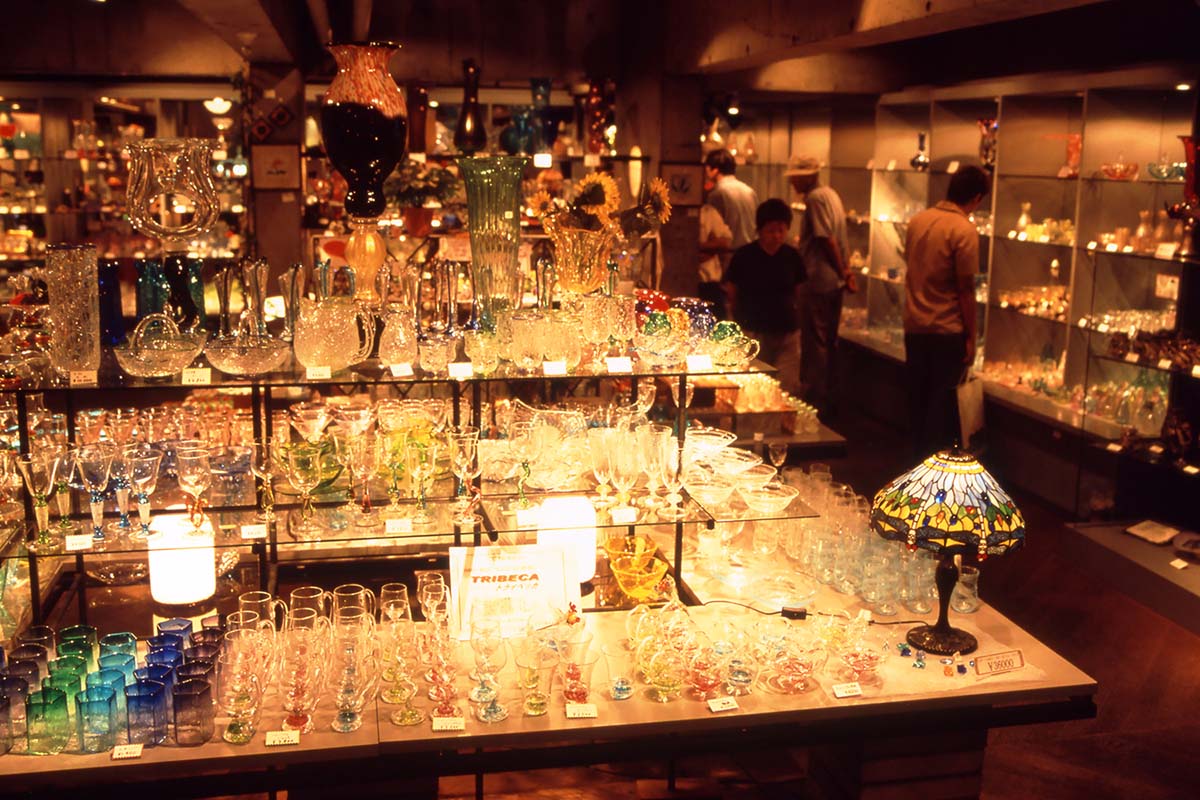
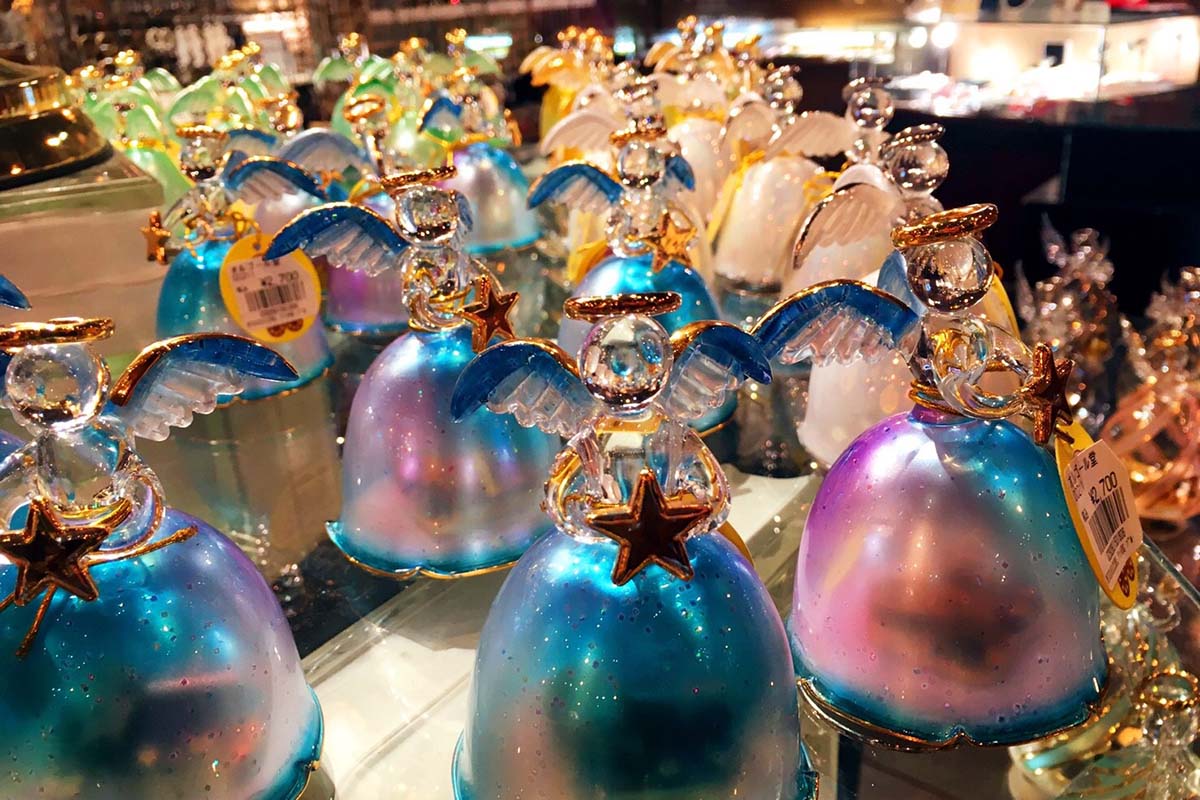
Otaru is known for its crafts, such as glass products and music boxes, and of course delicious seafood and sushi. Being a fishing port, there is always a fresh catch of fish coming in. Another thing flowing into the historic port cities is money. In its old days of glory, Otaru used to be the center of trade and finance in Hokkaido and there were numerous banks in the city. A reminder of those days is the street called the Wall Street of the North with its old bank branch buildings. In addition to that, there are many other old buildings brimming with history in Otaru. Read on to find out more about them!
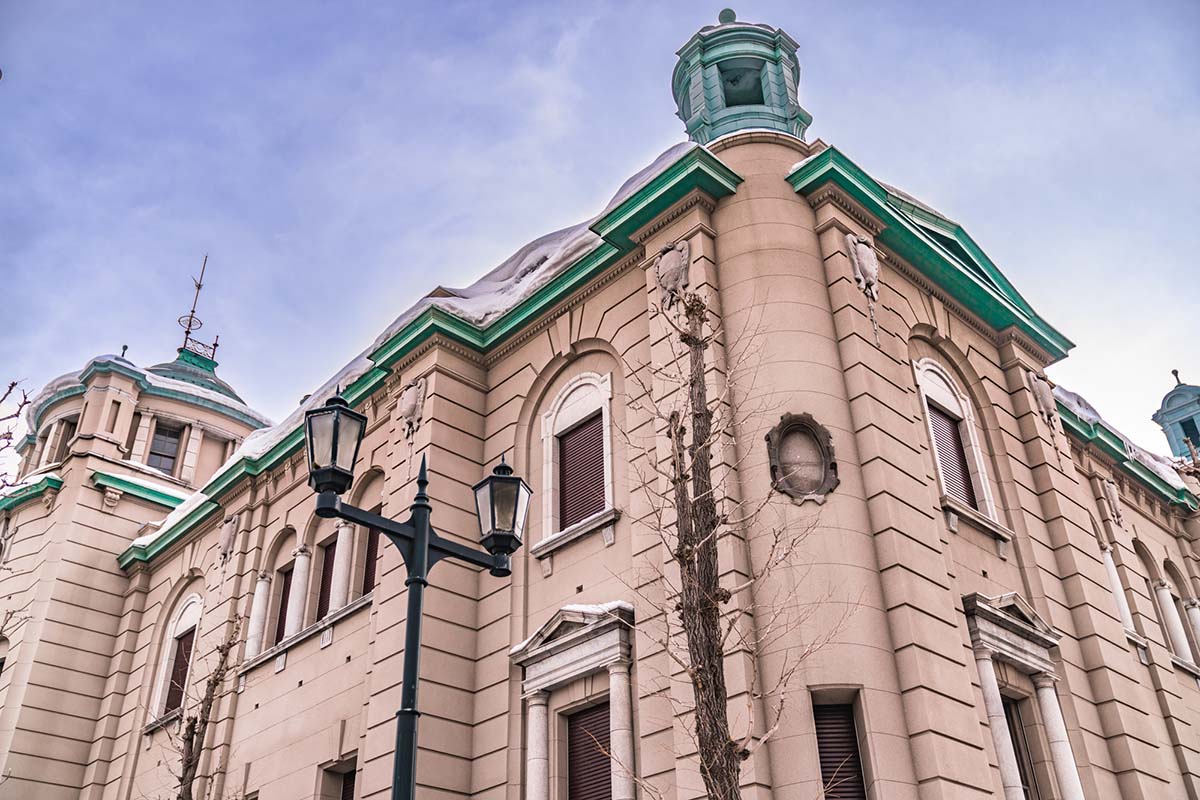
In this blog column, you can read about the history of the landmark buildings of Otaru and how you can enjoy the historical buildings today. Don’t forget to take a look at our earlier blog columns Nostalgic Gourmet Stroll in Otaru: Mochi, mochi, and more mochi! and History of Hokkaido: Crafts and trade at Otaru city about Otaru, too.
What kind of city is Otaru?
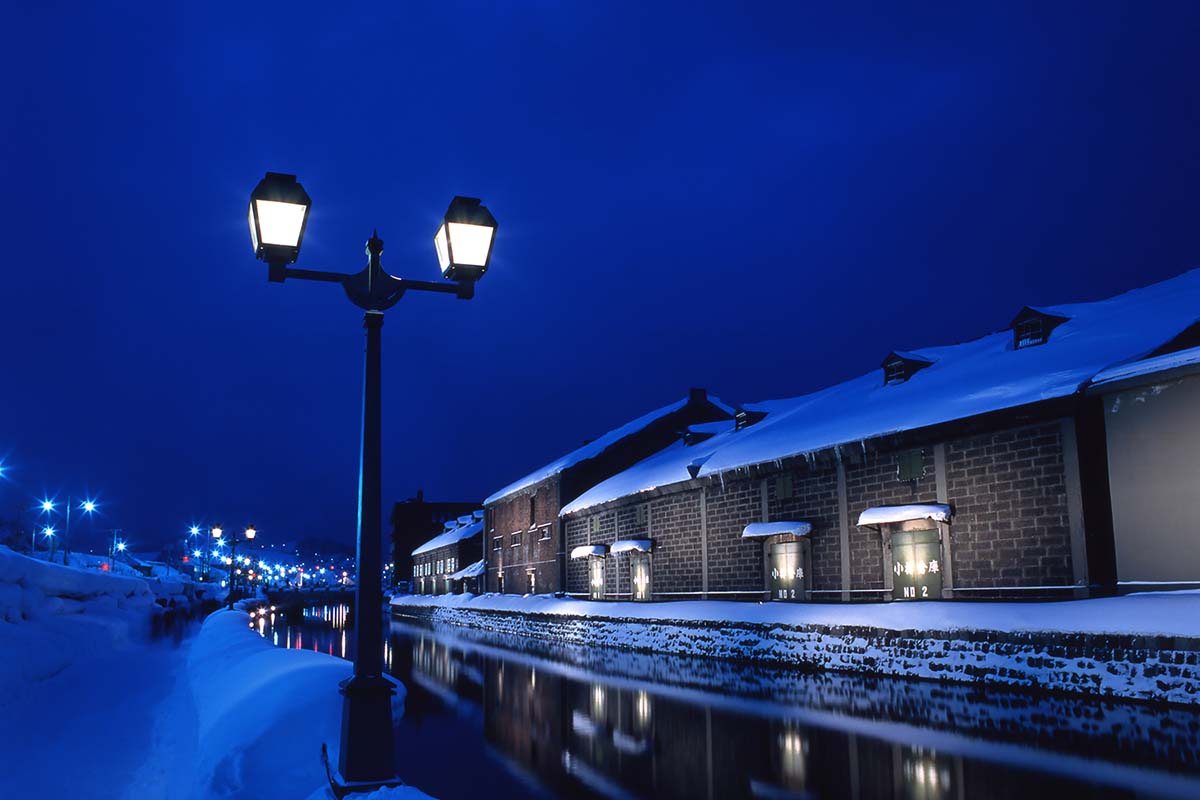
Otaru (小樽) is a port city facing Ishikari Bay and the Sea of Japan, about one hour by train to the west from Sapporo, the capital of Hokkaido. Japanese love Otaru as a travel destination but it has become a favorite travel spot in Hokkaido also for visitors from abroad. The city is known for its fresh seafood, which can be enjoyed in the form of sushi and other seafood delicacies in the numerous restaurants at Otaru waterfront. Undoubtedly the most famous scenery of Otaru city is the 1120-m-long Otaru canal built in 1912, lined with 63 gas street lamps and old warehouses turned into cafes, restaurants, and shops. Also, one of Otaru Beer’s breweries is located in the old warehouses.
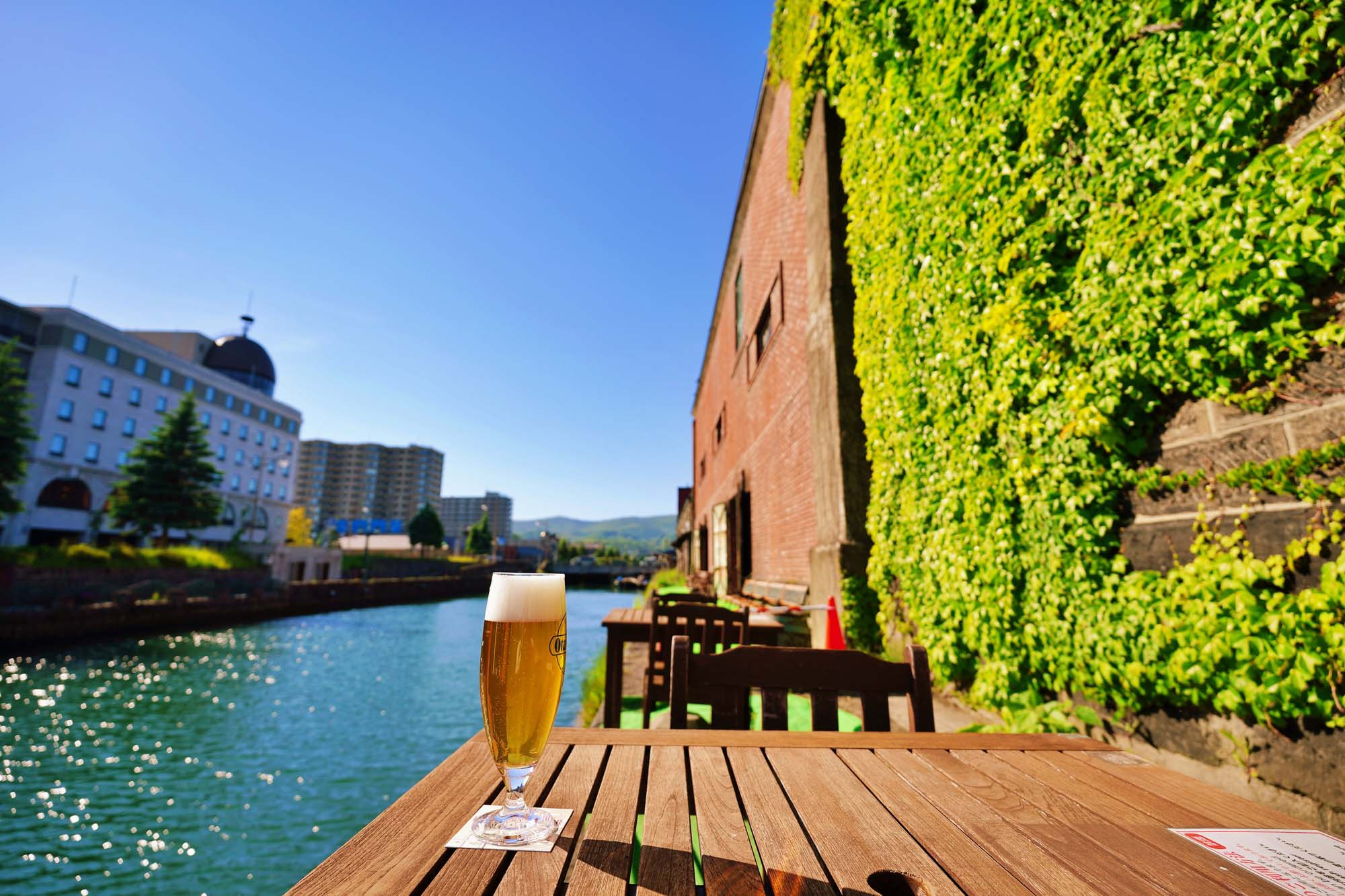
The warehouses are not the only famous historical building in Otaru, on the contrary, there are several others, too! The old, renovated buildings of Otaru give the city a romantic and nostalgic feeling and make the city one of the most picturesque cities in Hokkaido. This kind of streetscape makes Otaru a lucrative filming location for TV drama series and movies, of which one of the most famous is Love Letter released in 1995. On the other hand, the old buildings are not just a scenic view but also tell the history of the international Otaru city. Otaru used to be the center of finance and trade in Hokkaido and you can see that from the number of old bank branch offices and company offices that dot the cityscape. Being the financial center has given the part of the city, in which the bank branches used to have their offices, the name Wall Street of the North (sometimes also in the form ‘Northern Wall Street’).
The modern history of Otaru
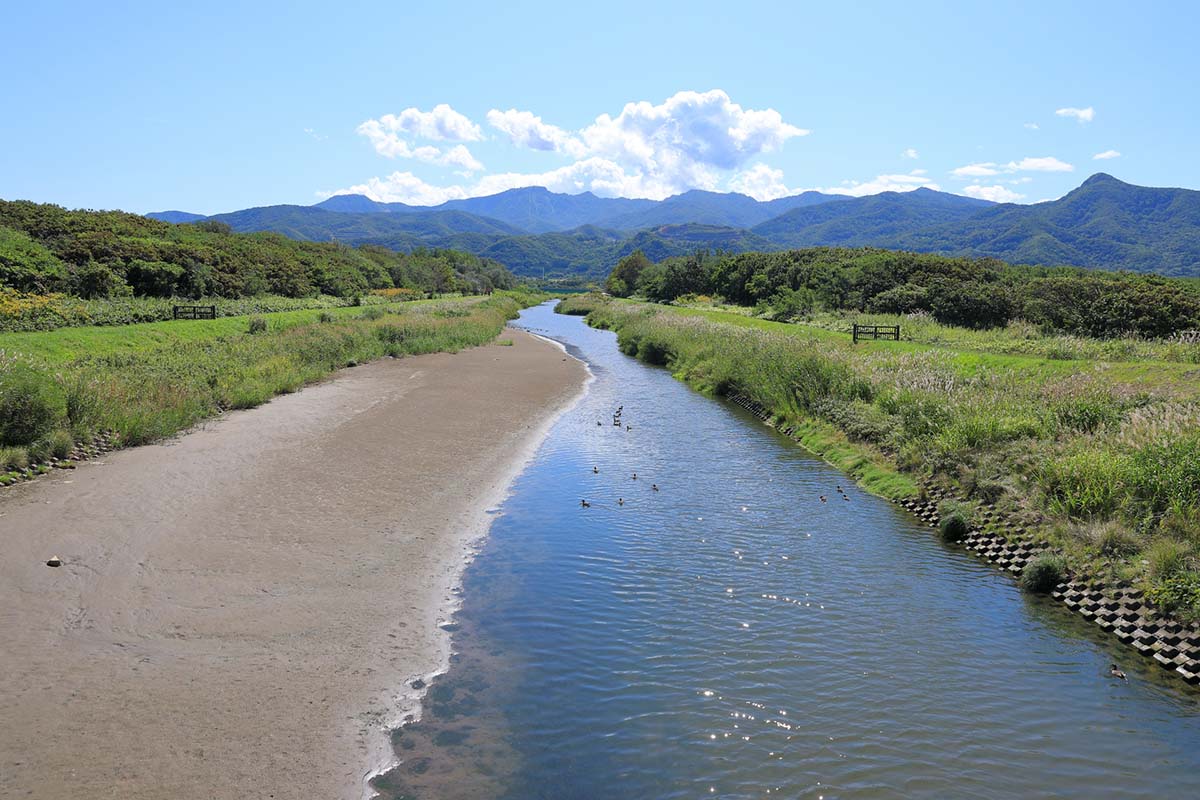
Otaru’s history as a Japanese city goes back in time to the late 16th century when the first Japanese settlers landed on the shores around Otaru. In the 17th century, a trading post was established at the mouth of the River Hoshioki (Hoshiokigawa/星置川), where the Japanese traded with the indigenous Ainu people of northern Japan. This makes Otaru one of the first settlements the Japanese settlers built in Hokkaido. Ainu called the lower reaches of the River Hoshioki ota or nay or ‘the river flowing at the sandy beach,’ which has been abbreviated into the form ‘Otaru’ by the Japanese. Today the river marks the border between Sapporo and Otaru, but the name of the trading post followed when the settlement moved westward from the river to the current location of Otaru city.
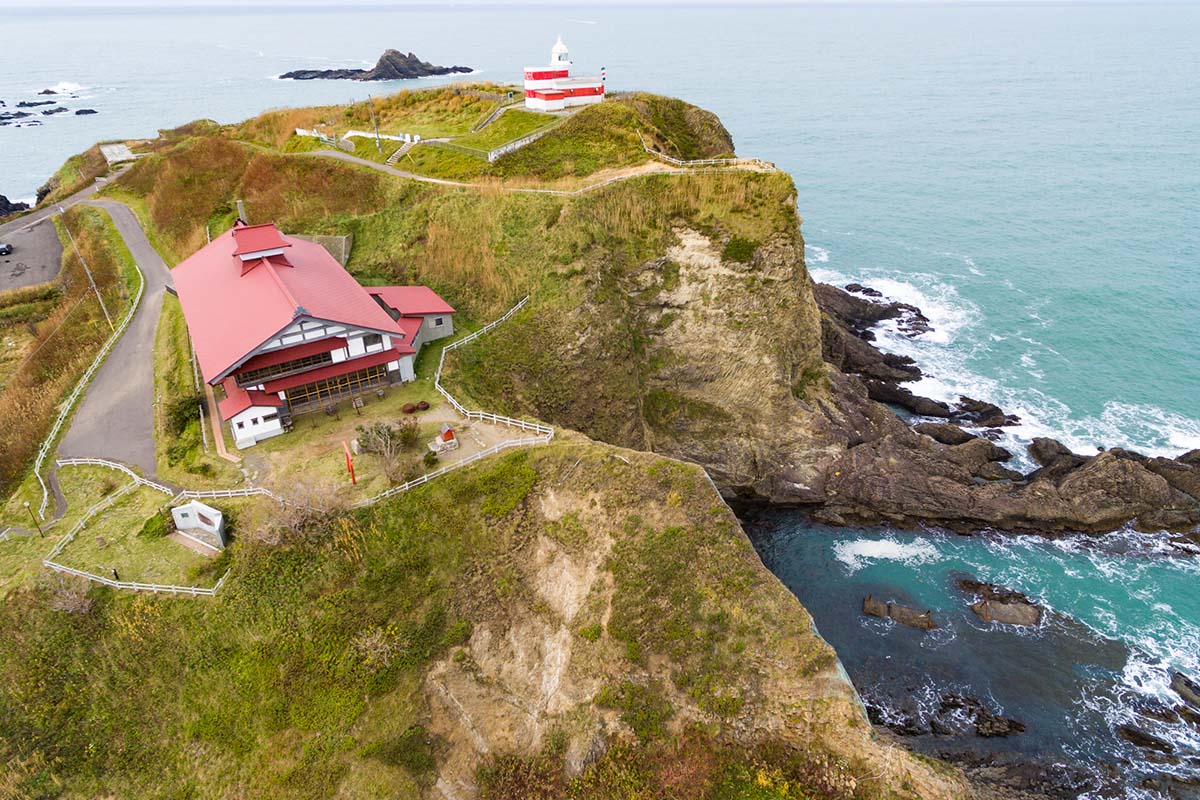
Otaru was officially established as a village in 1865, and thanks to its prosperous trade, its status was upgraded to that of a city in 1922. The main merchandises of Otaru were herring, different kinds of grains, and coal, of which herring was maybe the most important. In the 18th century and the beginning of the 19th century, kitamaebune—the north-bound cargo vessels owned by wealthy merchants—sailed from Osaka to the western coast of Hokkaido and all the way to Otaru to be loaded full of herring. Most of the herring was not eaten but used as a fertilizer in the numerous paddy fields of southern Japan. The wealthy fishermen of Hokkaido built luxurious villas for their families to live in but also to lodge the workers needed in herring catching and processing. These villas are called Herring mansions (nishin goten / 鰊御殿), which you can read more about later in this blog column. The herring industry collapsed in the 1950s, mostly due to the harsh over-catching of herring. Now the number of herring shawls swimming in the waters of the Sea of Japan is just a faint memory of the olden days of Otaru.

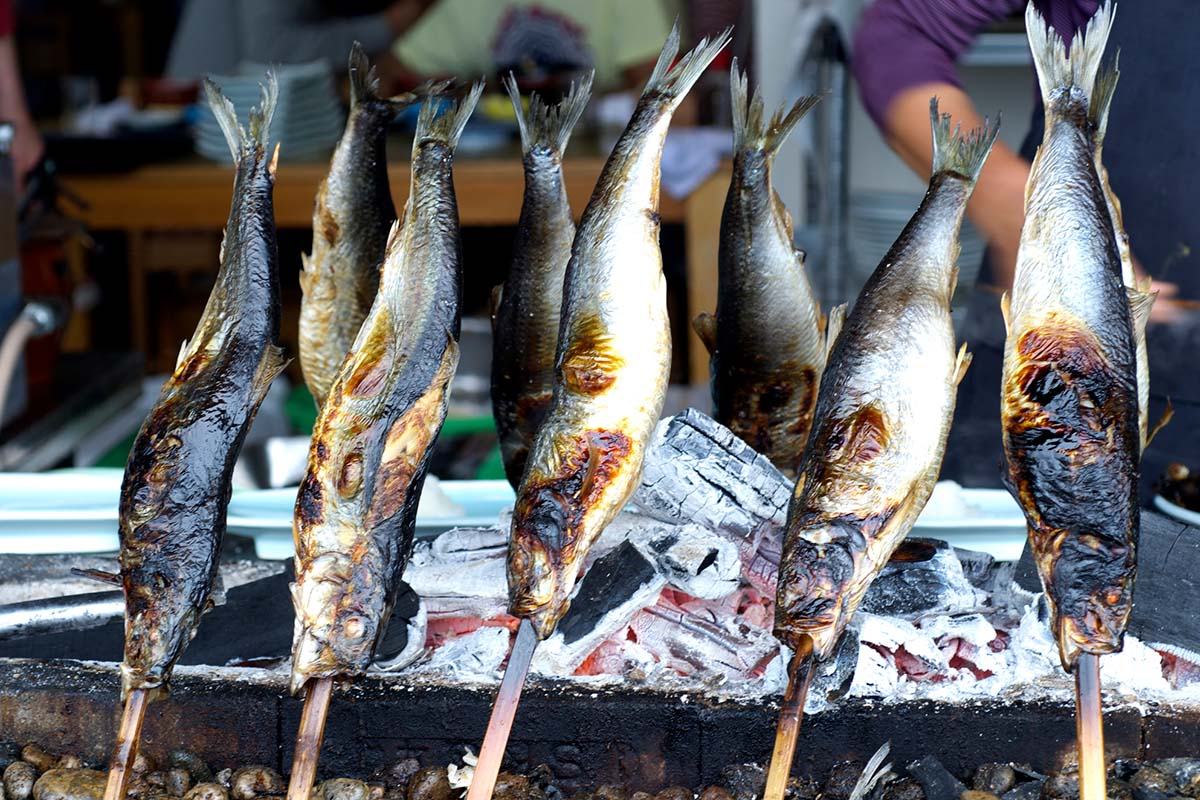
Due to the prosperous herring and grain trade and being a major shipping port for coal mined in inland Hokkaido, Otaru started to develop into the center of commerce in Hokkaido in the early 20th century. In addition, there was a lot of international trade, for example with Russia. Many banks, including a branch of the Bank of Japan (opened in 1893), were established in Otaru, which earned the banking district of Otaru the nickname Wall Street of the North. The first bank in Otaru was opened in 1878 following several others so that in the mid-1920s there were as many as 25 banks operating in the relatively small Otaru city. If you compare this with the 10 banks at the same time operating in Sapporo—the largest city and the capital of Hokkaido—or even with 16 banks operating in Hakodate, the southern trade hub of Hokkaido, you can see the importance of Otaru’s banking industry.
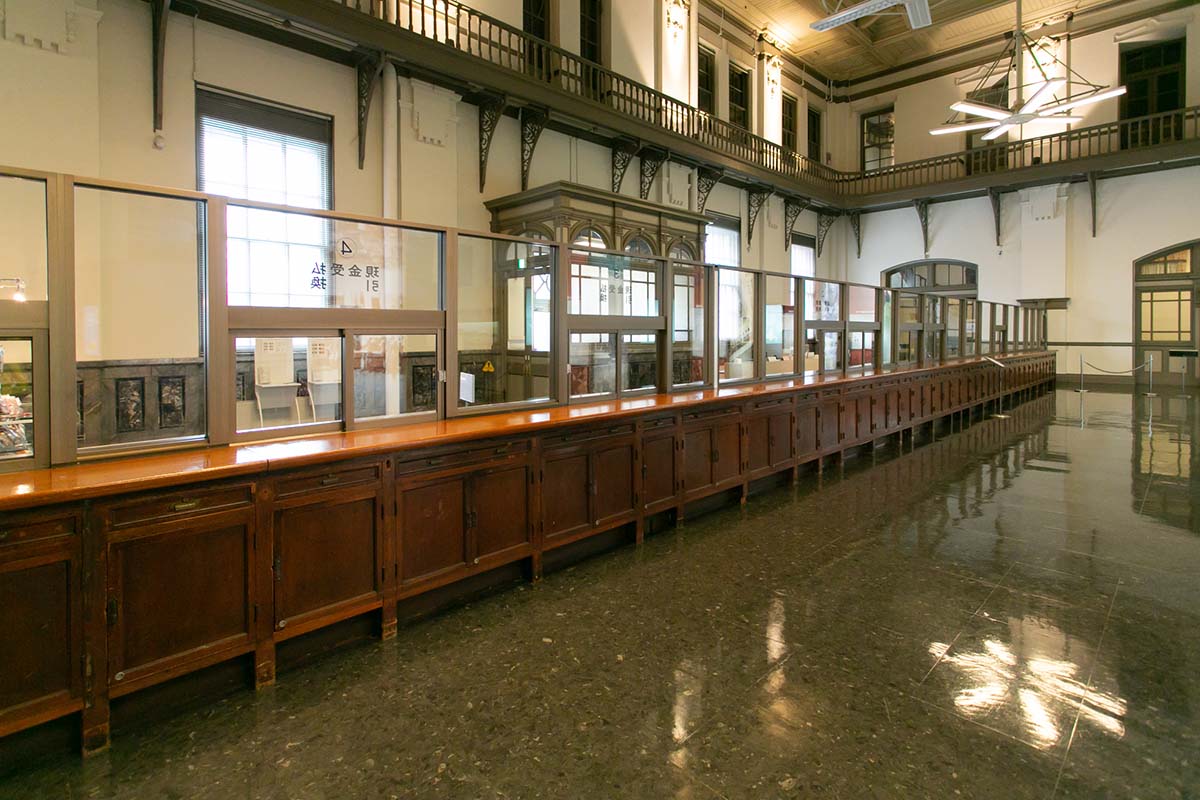
The significance of Otaru as the center of finance and trade started to wane after World War II for numerous reasons: The opening of a reliable ferry connection (Seikan liner) between Aomori and Hakodate and the building of Tomakomai port in southern Hokkaido, the declining demand on coal, the introduction of the policy to make Sapporo the capital of Hokkaido, and the decline of trade to Sakhalin and continental Northeast Asia. However, most of the former bank buildings are still left in Otaru and serve today various purposes from museums to restaurants and hotels. Keep on reading to find out more about these historical buildings!
Wall Street of the North and its landmark buildings
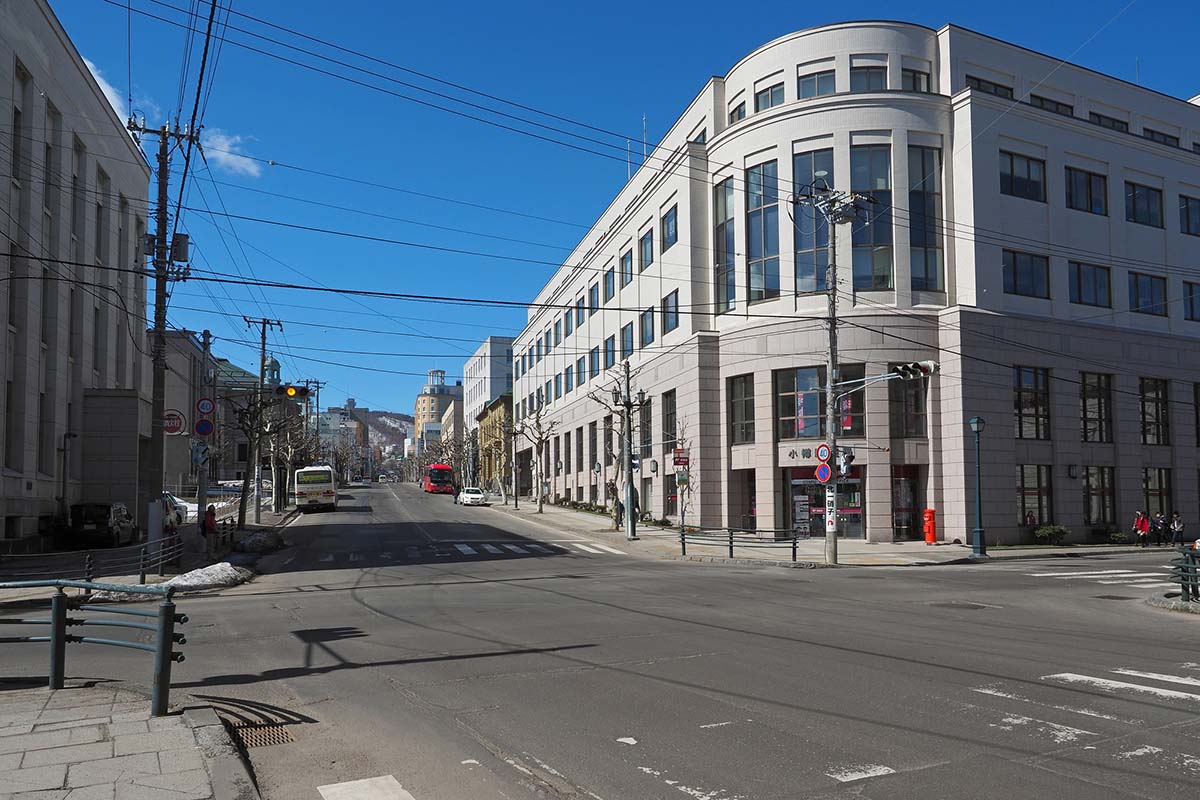
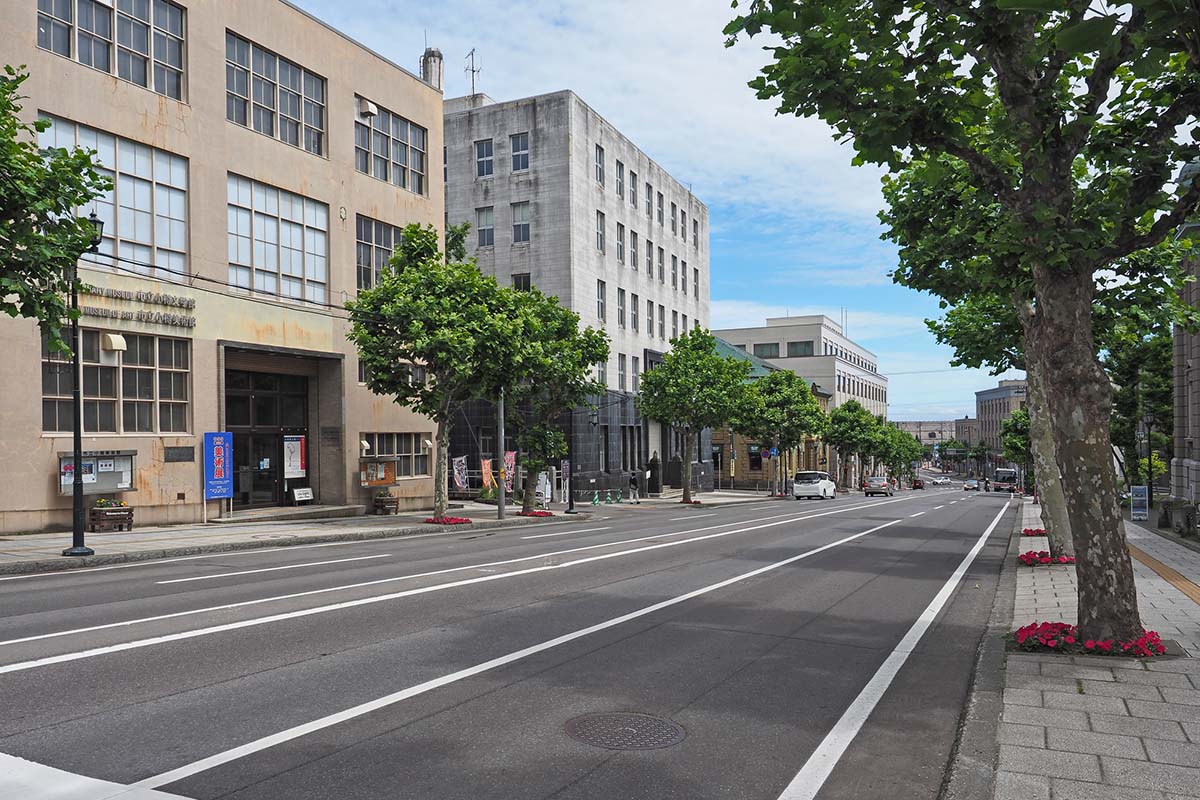
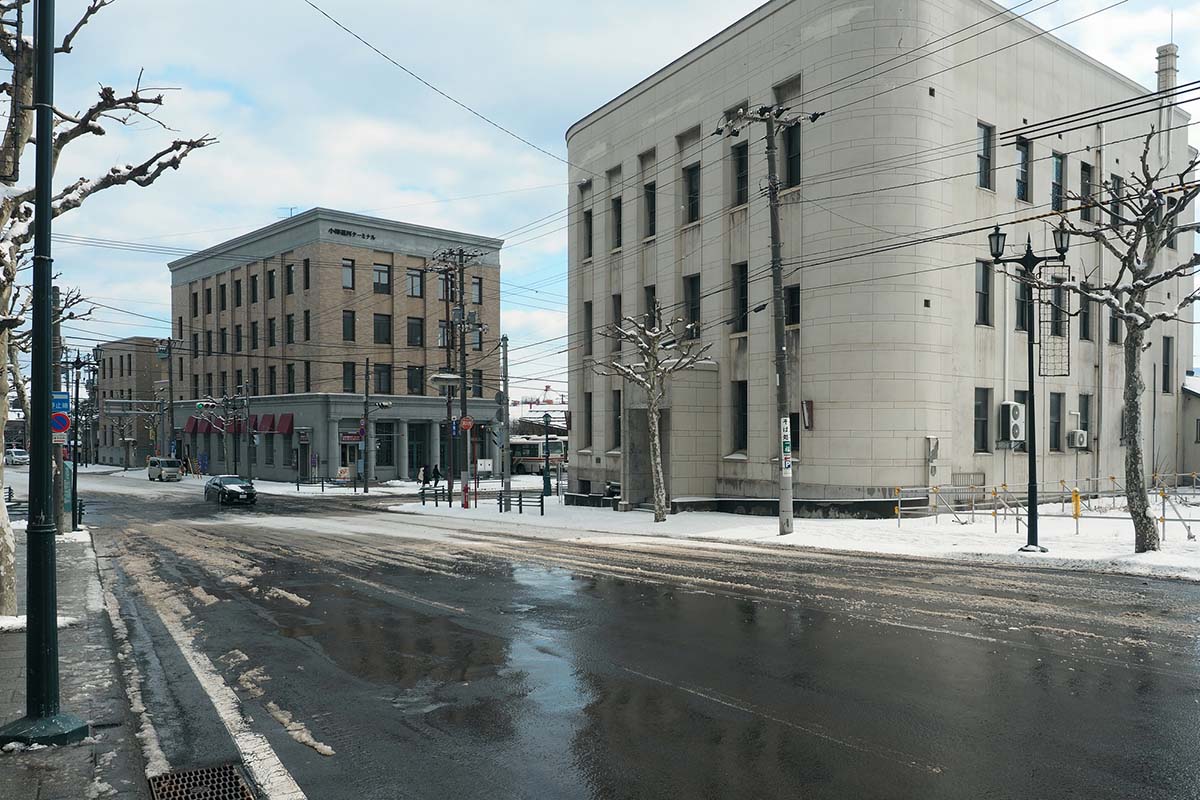
The banking industry in Otaru was concentrated on a certain area of the city, which gained it the nickname Wall Street of the North (Kita no Woorugai/北のウォール街). The Wall Street of the North is a large area stretching from the Asakusa bridge crossing the Otaru canal and climbing up the gentle slope westwards. Prosperous banks needed of course buildings that showed off their prestige and there are other buildings related to business and trade, too. The Wall Street of the North is lined with numerous old bank buildings, which are especially concentrated around the intersection of Nichigin Street (Nichigin Dori / 日銀通り) and Ironai Odori Street (Ironai Odori / 色内大通り), just north to the famous Sakaimachi street of Otaru. In this section, you can read about the most important historic buildings on Wall Street of the North district and how they are currently used.
The Former Otaru Branch of the Bank of Japan

The Former Otaru Branch of the Bank of Japan (日本銀行旧小樽支店) was built in 1912 with a renaissance-style facade and it’s one of the most iconic buildings in Otaru. The facade looks as if it’s made of stone but in reality, it’s mortar over brick. The owl motifs decorating the walls are designed after Blakiston’s fish owl native to Hokkaido and they are said to be keeping watch in the night when the bank staff is not present. Blakiston’s fish owl is called kotan kor kamuy in the indigenous Ainu people’s language and it means the deity that protects the village, so the owl is a good choice for the protective motif in that sense, too.
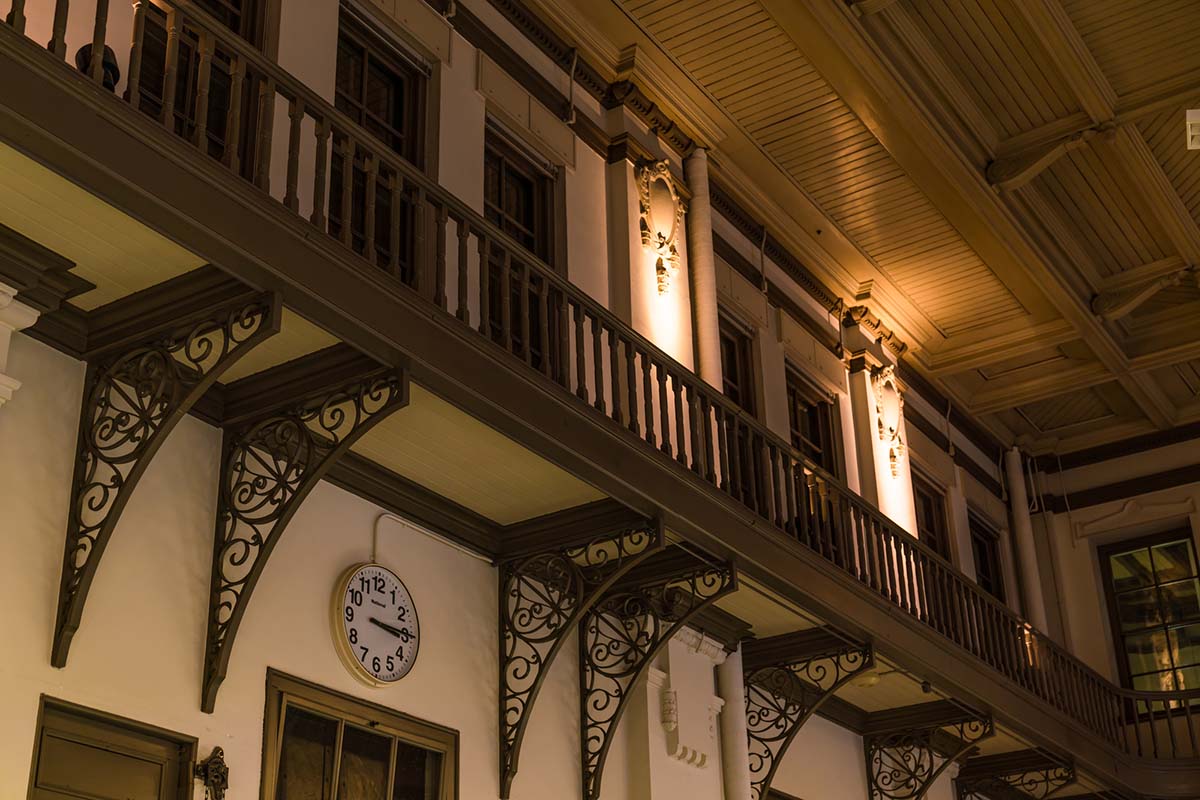
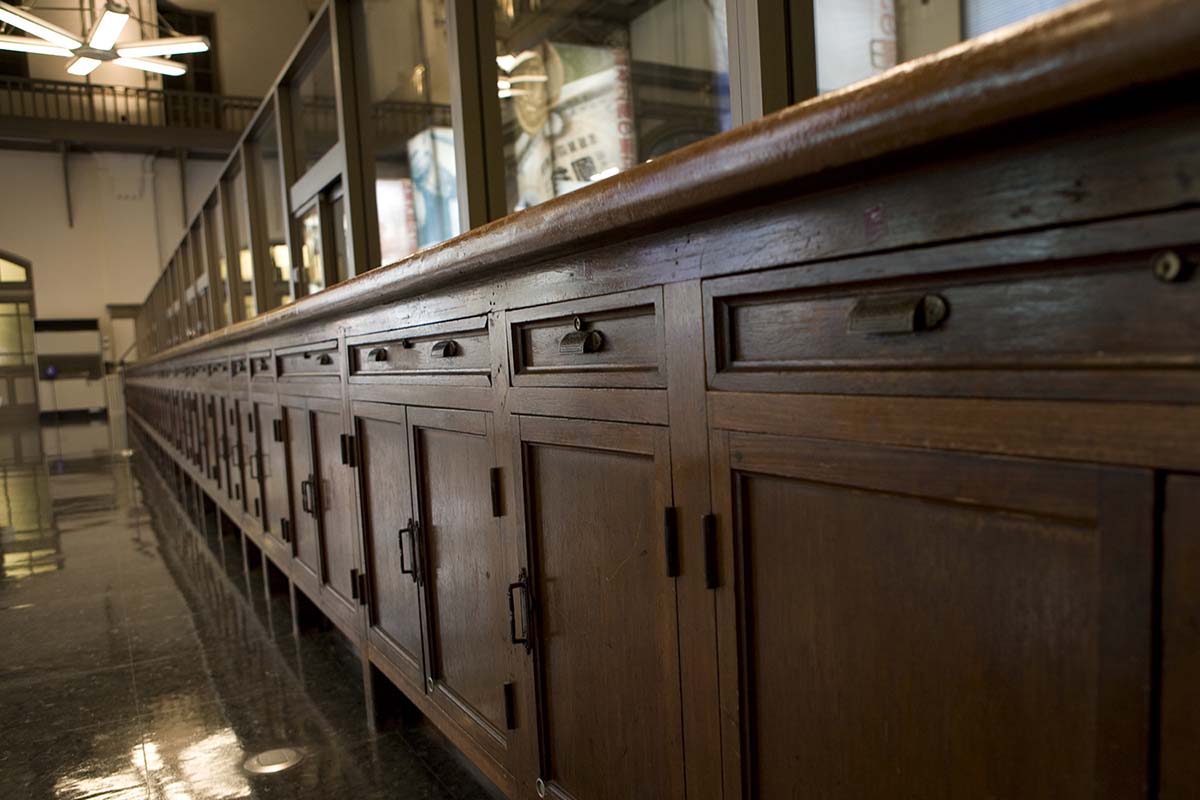
While at the time the business functions of the Otaru branch of the Bank of Japan were already moved to the Sapporo branch, the Otaru branch was used as an office until 2002. In 2003, it was repurposed as the Bank of Japan Otaru Museum (日本銀行旧小樽支店金融資料館) (an outbound link). In the museum, you can learn about the history of the Bank of Japan and Japan’s financial system in general. There are also some fun activities in the museum, such as a 100 million yen weight-lifting experience, so it’s worth dropping a visit to the museum during your Otaru trip.
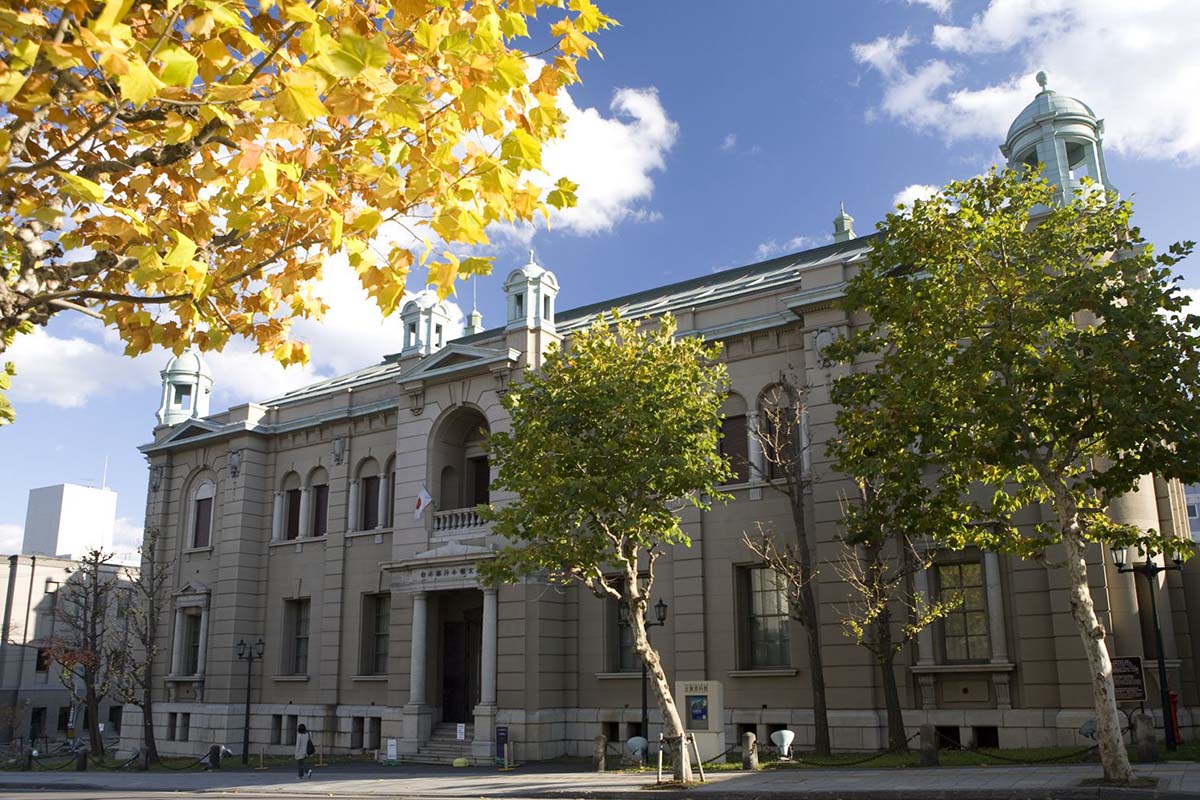
Former Otaru Branch of Hokkaido Bank
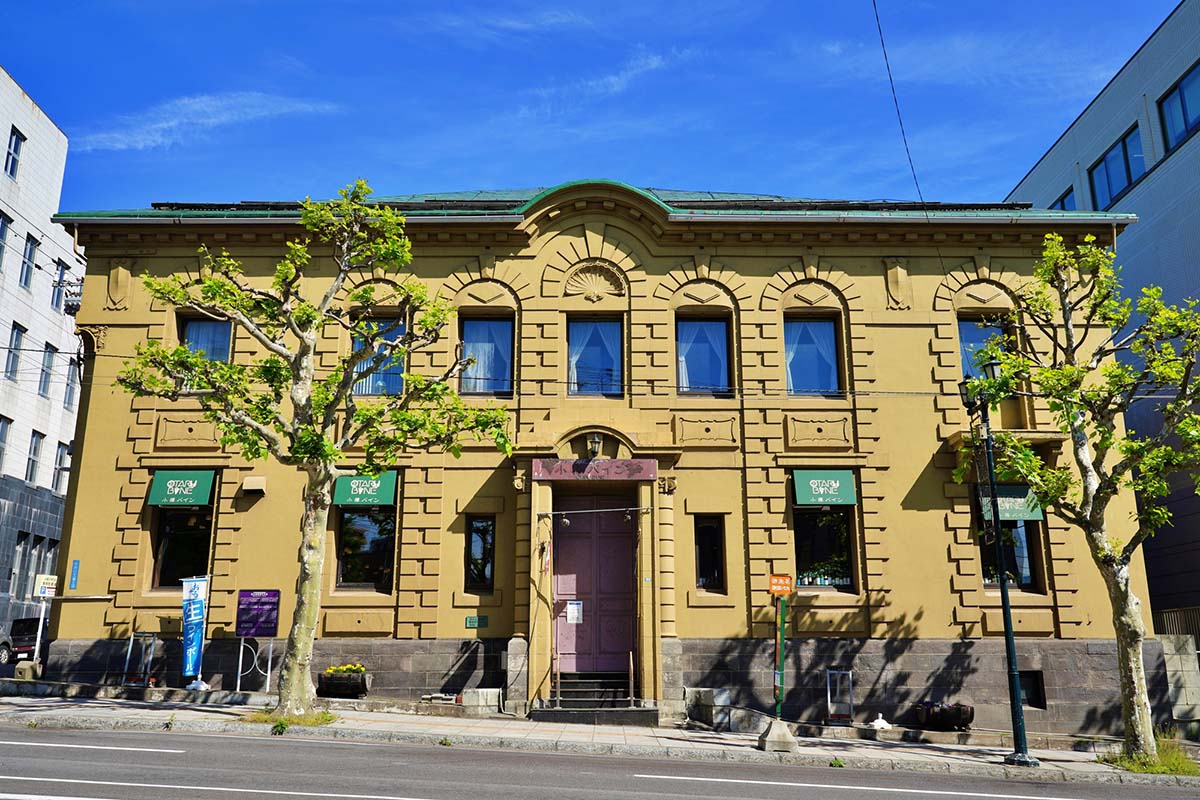
The former Otaru Branch of Hokkaido Bank (旧北海道銀行小樽支店) built in 1912 is a Renaissance-style building made of Sapporo freestone (Sapporo nanseki / 札幌軟石)—a stone type that is easy to cut without making the stone split or shatter. As the name already tells it, Sapporo freestone can be found in abundance in Sapporo, especially in the mountains in the southern part of the city.
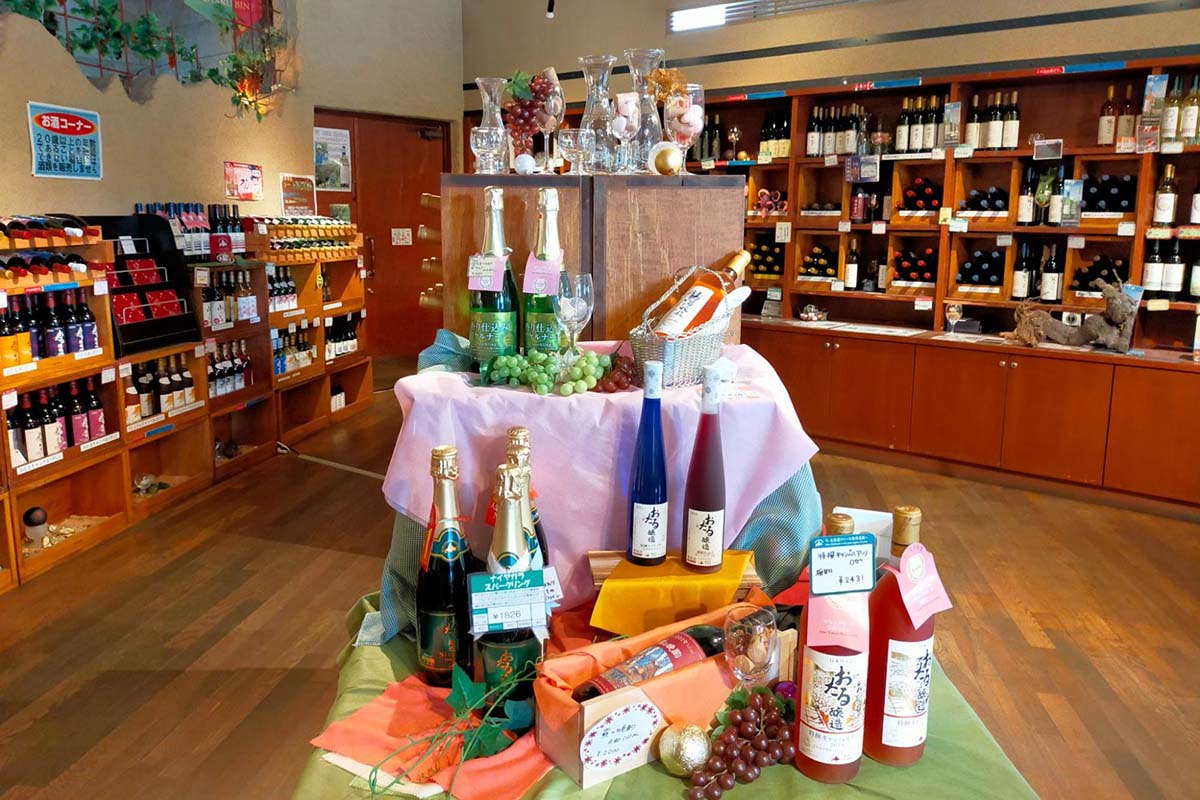
Now the former Otaru Branch of Hokkaido Bank building is used as the head office of Hokkaido Chuo Bus (北海道中央バス) and there is also a famous cafe & shop specializing in wines called Otaru Bine (小樽バイン) (an outbound link) operating in the building. The name of the shop is a wordplay: Otaru wine refers to local wines (that getting more and more attention in the international wine community) and changing the first letter of ‘wine’ to B refers to ‘bus’ but also to ‘bank’ to show respect to the history of the building. The cafe & shop offers an assortment of Italian dishes that go well with the 10 different wines on the menu.
Former Etchuya Hotel

The prestigious Etchuya inn was founded in 1877 and in 1931 it built the first hotel in Otaru that lodged foreign travelers exclusively. The former Etchuya Hotel (旧越中屋ホテル) is a 4-story reinforced concrete building with iconic art deco-styled windows on its facade and stained glass windows in the lobby. However, the hotel operated only 10 years after its opening and was confiscated by the Japanese army in 1942 and used as an officers’ club. Japan lost the war and the building was then taken over by the U.S. Forces and finally returned to Etchuya in 1950. However, in 1952 it became state property (handed over as a part of inheritance tax, if you need to know the reason). After that, the ownership of the building changed hands several times and the latest hotel entrepreneur had to close the hotel down in 2009. The building was left unused for a decade but in 2019 it was reopened as the stylish Unwind Hotel and Bar Otaru (an outbound link).
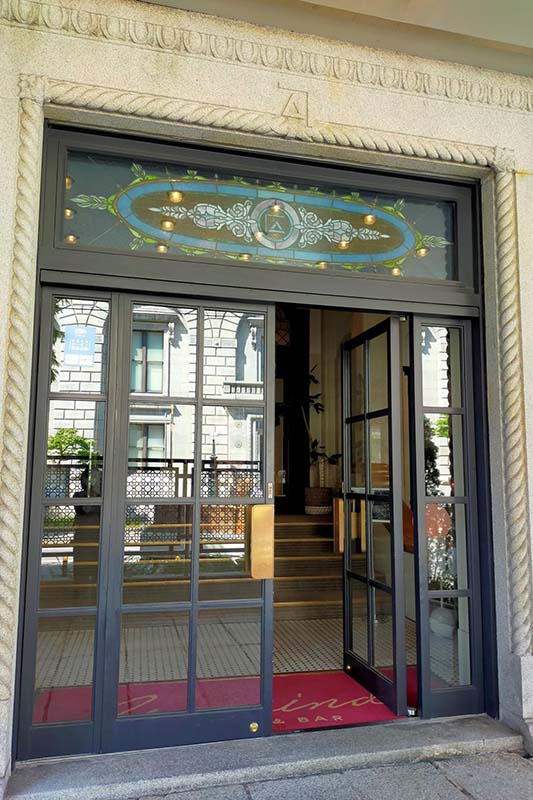
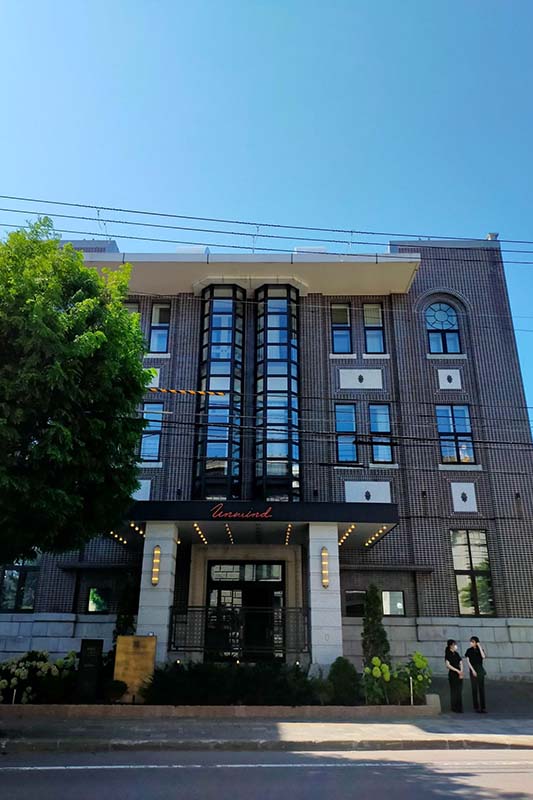
Former Otaru Branch of Hokkaido Takushoku Bank
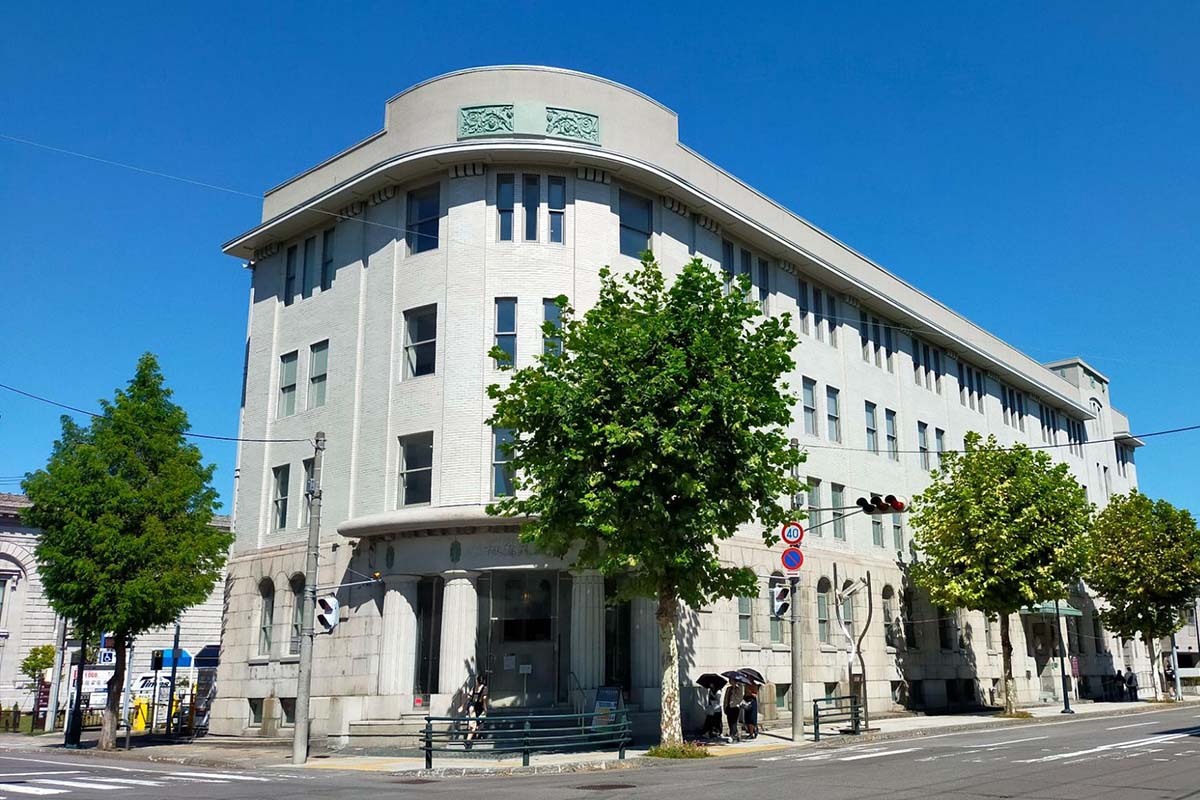
The former Otaru Branch of Hokkaido Takushoku Bank (旧北海道拓殖銀行小樽支店) built in 1923 is one of the early reinforced concrete constructions in Hokkaido. The building stands at the intersection of Nichigin street and Ironai Odori street with Otaru branches of Mitsubishi bank and Daiichi bank. The former Otaru Branch of Hokkaido Takushoku Bank was considered an enormous building at the time it was finished: the four-story building had plenty of space for the bank branch as well offices for rent. The most impressive part of the building is the bank hall which has a vaulted ceiling up to the second floor and is lined with six classical columns. The building was used as Takushoku bank’s branch office until 1989 and since then it has been home to various hotels and art museums.
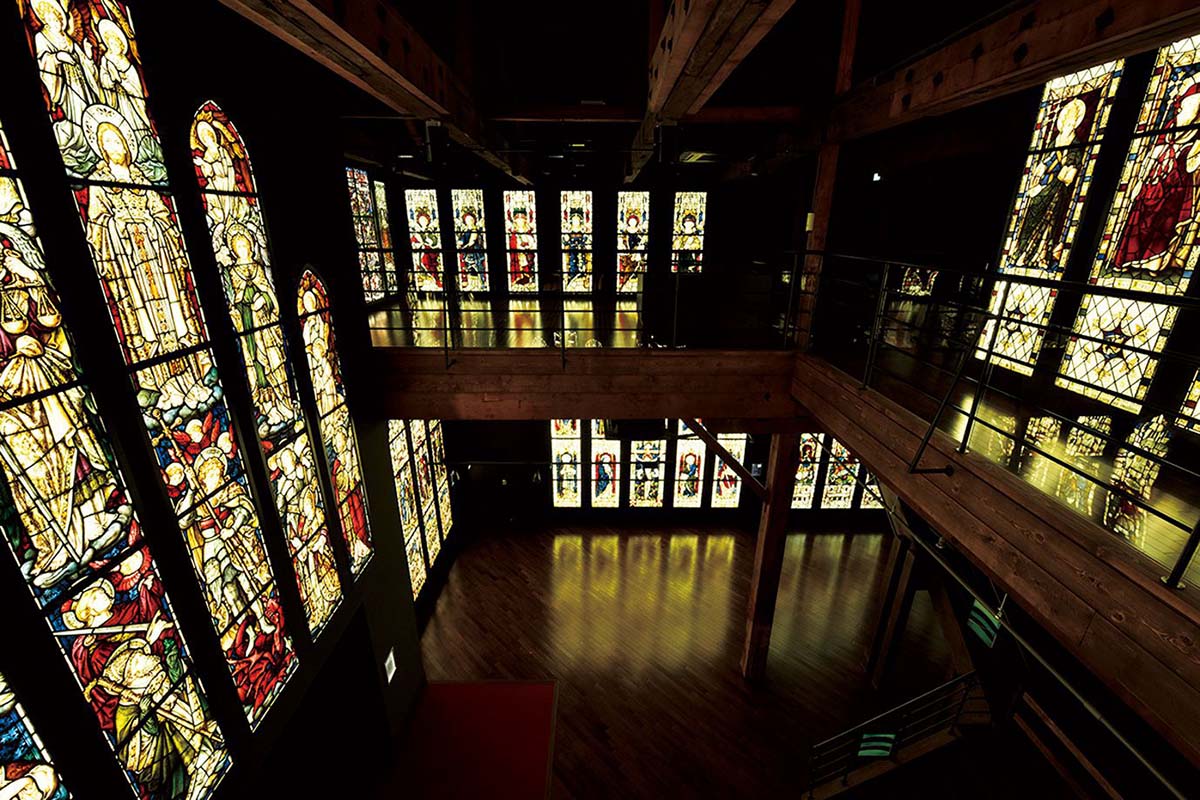
Currently, the building hosts the Nitori Art Museum (似鳥美術館) (an outbound link) that is part of Otaru Art Base (小樽芸術村) (an outbound link). There are Japanese paintings by Taikan Yokoyama, and Gyokudo Kawai as well as wooden sculptures by Koun Takamura and Western art by Ryusei Kishida and many others on the display in the museum. There is also an Art Nouveau Art Déco Glass gallery. The other historical buildings that are a part of Otaru Art Base are the Former Arata Shokai/Former Takahashi Warehouse (旧荒田商会・旧高橋倉庫), which is now a stained glass museum, and Former Naniwa Warehouse (旧浪華倉庫), which is now a western art museum, and Former Otaru Branch of Mitsui Bank.
Former Otaru Branch of Mitsui Bank

The former Otaru Branch of Mitsui Bank (旧三井銀行小樽支店) consists of two buildings—the main building and the annex—constructed in 1927. The Greek-Roman-style building has walls made of granite and it retains the feeling of an old bank, especially in its vault room and basement safe deposit vaults. In November 2021 both buildings along with 2 attached fences and 347 architectural materials were designated as an Important Cultural Property (重要文化財) by Otaru City, and in February 2022 as a National Important Cultural Property. The addition of the former Otaru Branch of Mitsui Bank to the list of National Important Cultural Properties means that there are now three of them in Otaru. The other two are the former Otaru Branch of NYK Line and the former Temiya Railway Facility.
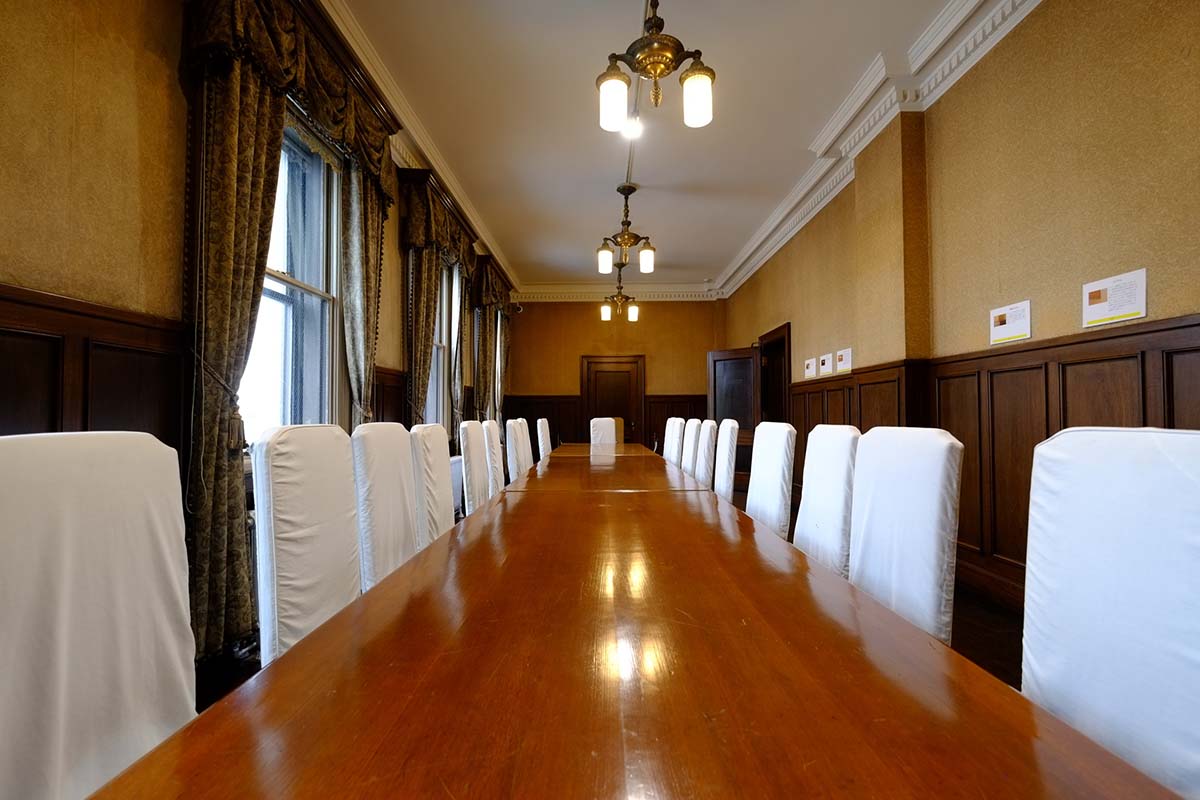
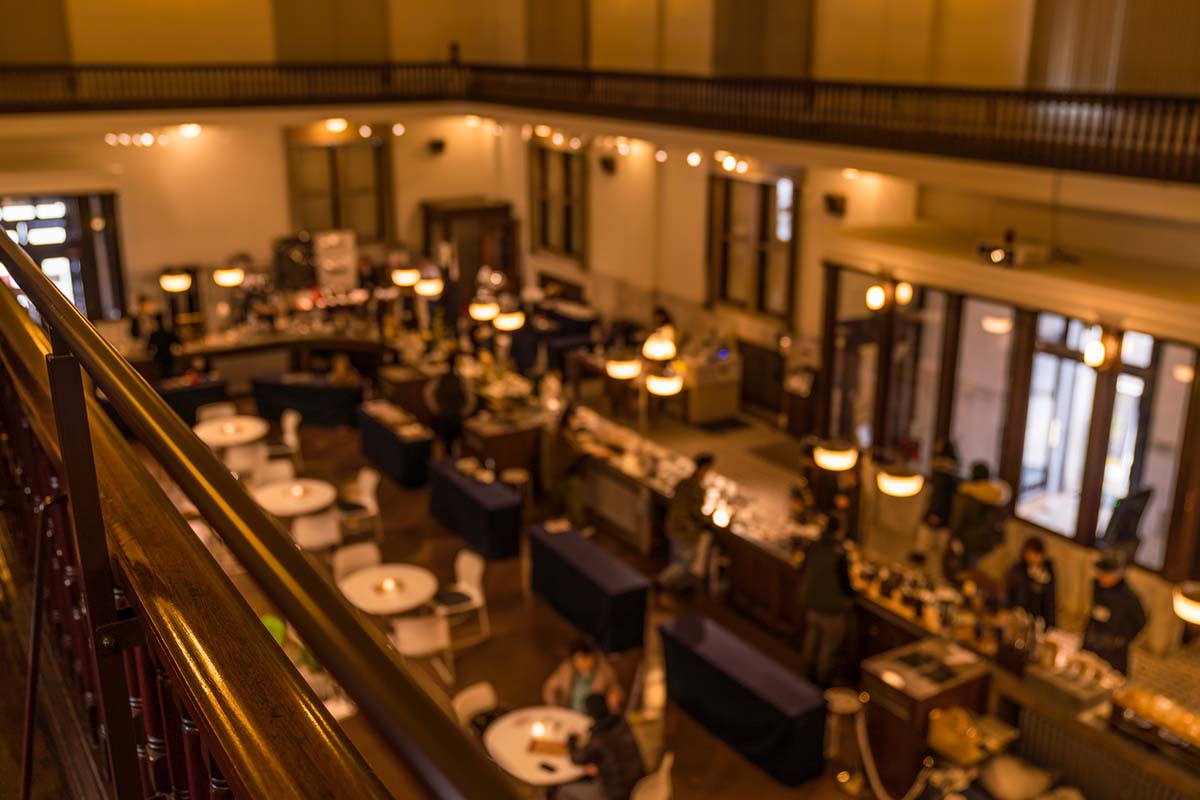
Mitsui Bank was doing business in Otaru for 122 years, from 1880 until 2002. Since 2016 the building has been used as a museum. The former Otaru Branch of Mitsui Bank is also a part of the Otaru Art Base (an outbound link) mentioned above.
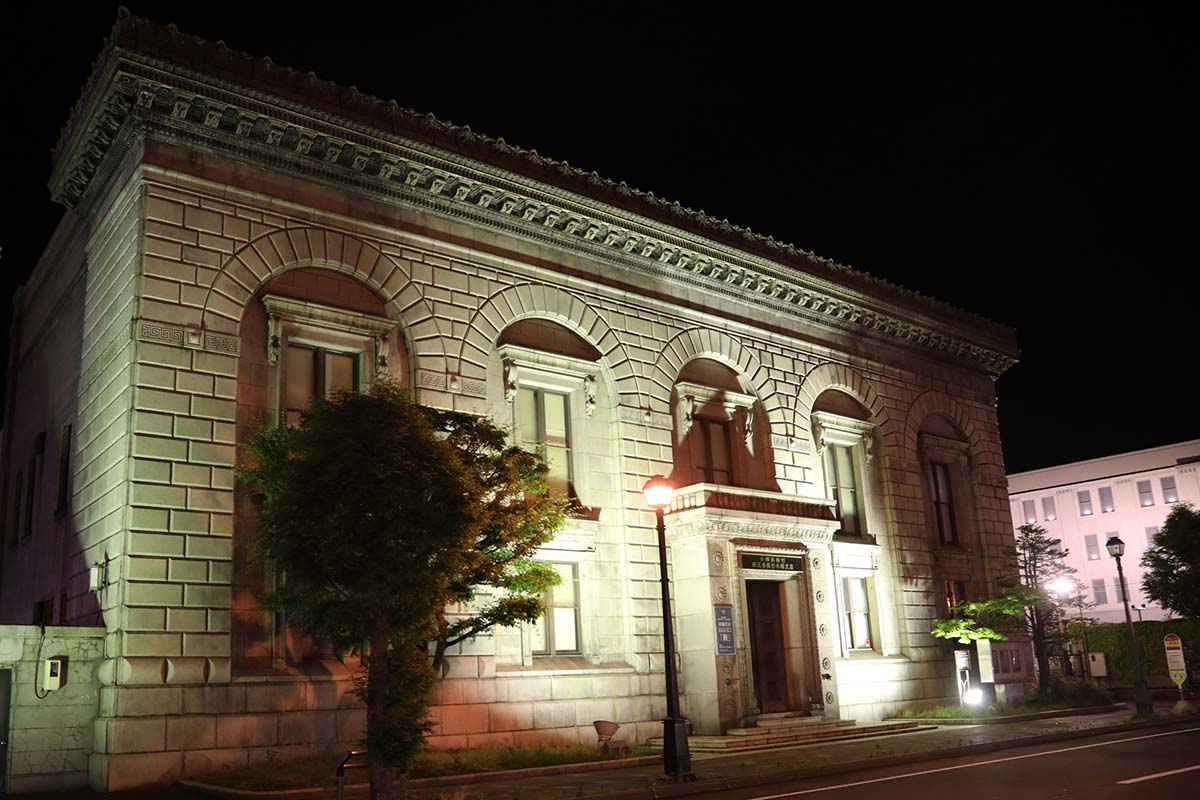
Former Nippon Yusen Co
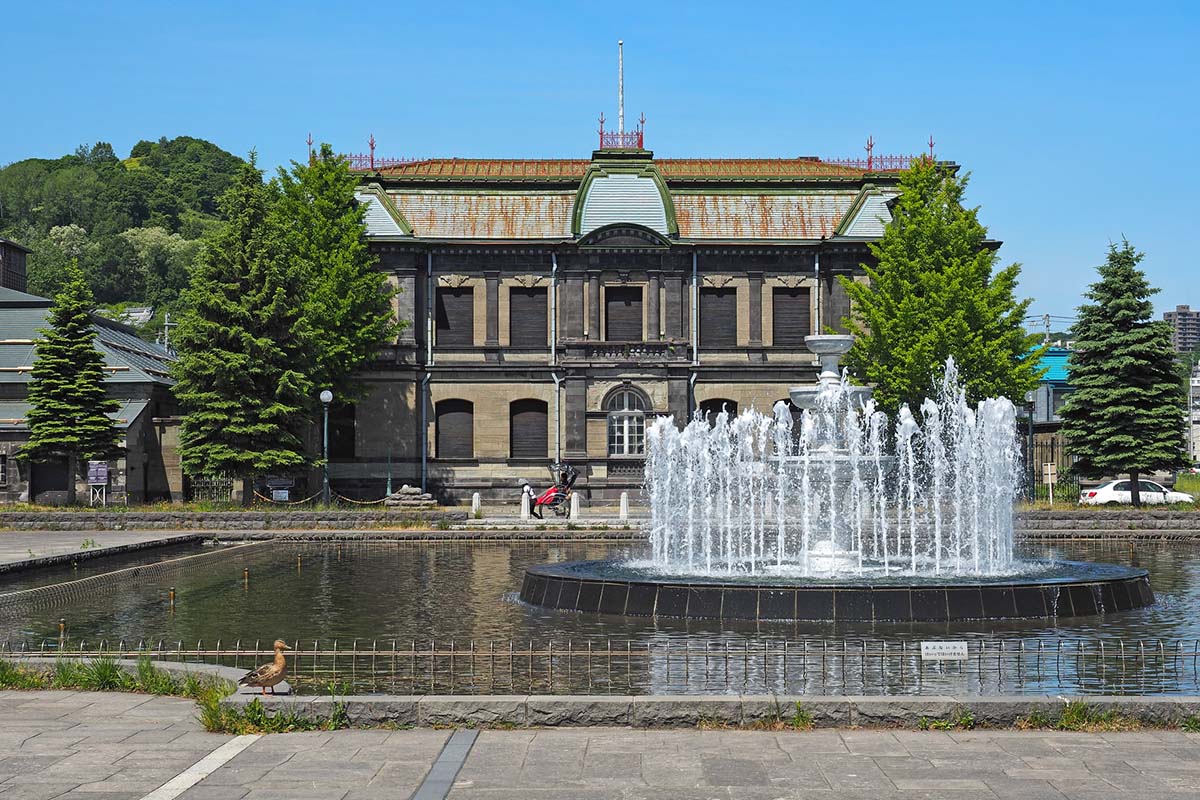

The Former Nippon Yusen Co (旧日本郵船株式会社小樽支店) or Former Otaru Branch of NYK Line had its Renaissance-style branch building constructed in 1906. The building is one of the few purely stone-built buildings in Otaru and the stonework techniques used in its construction were cutting-edge at the time. It took 2 years to complete the construction work and when the building was completed, it immediately became the symbol of Otaru’s economic boom. The front side of the building was designated as a warehouse and the former Temiya line railroad track was running along the back side of the building. The Former Nippon Yusen Co. building is one of the three buildings and facilities in Otaru that has been designated as a National Important Cultural Property by the government of Japan.
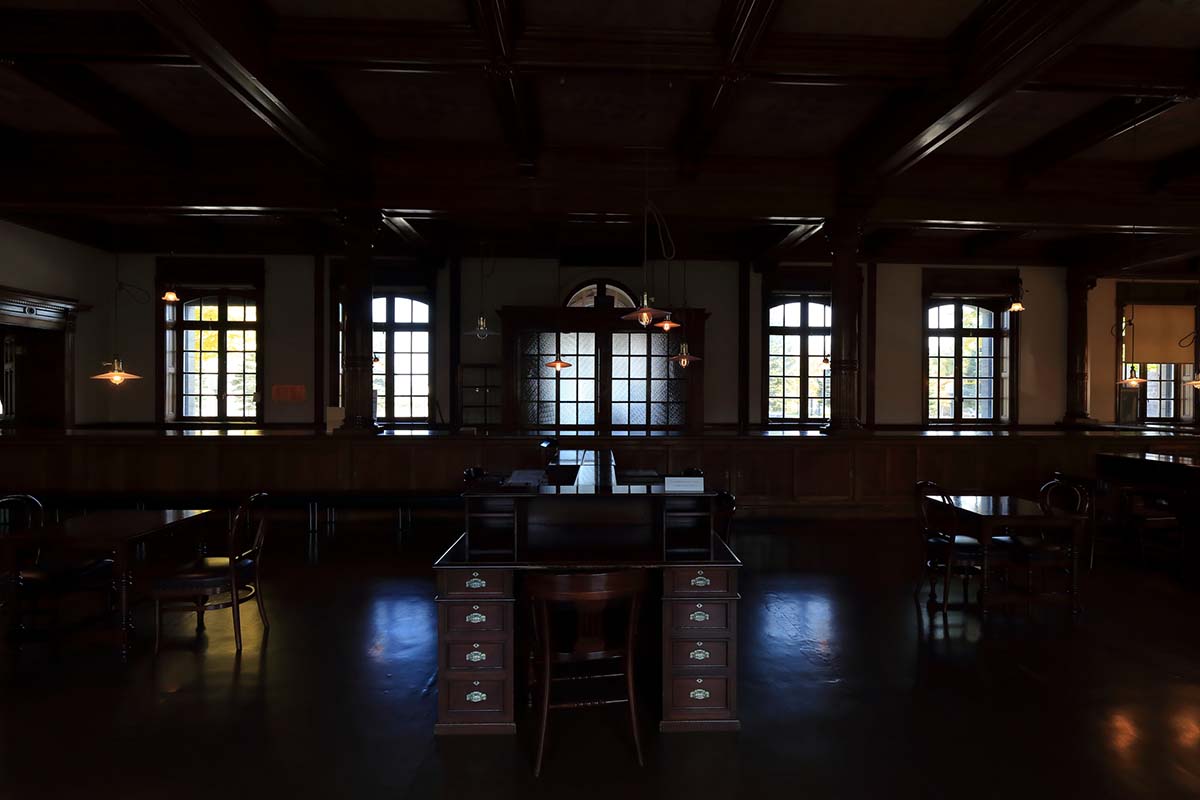
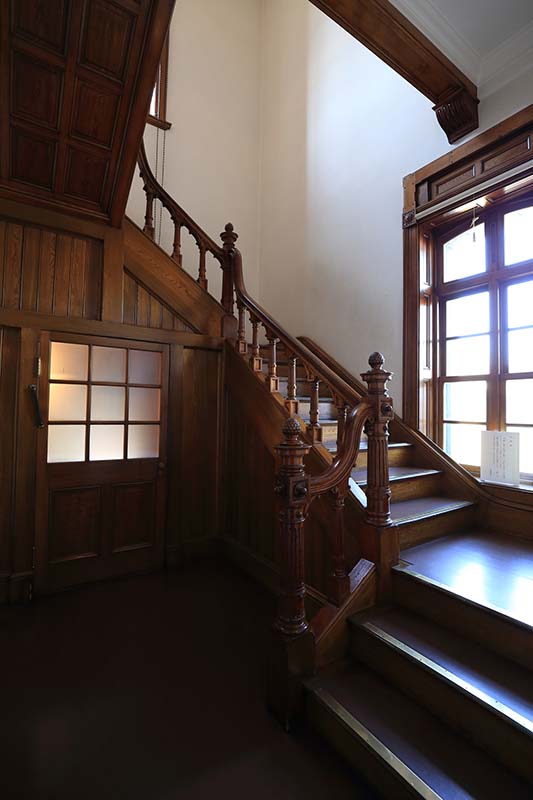
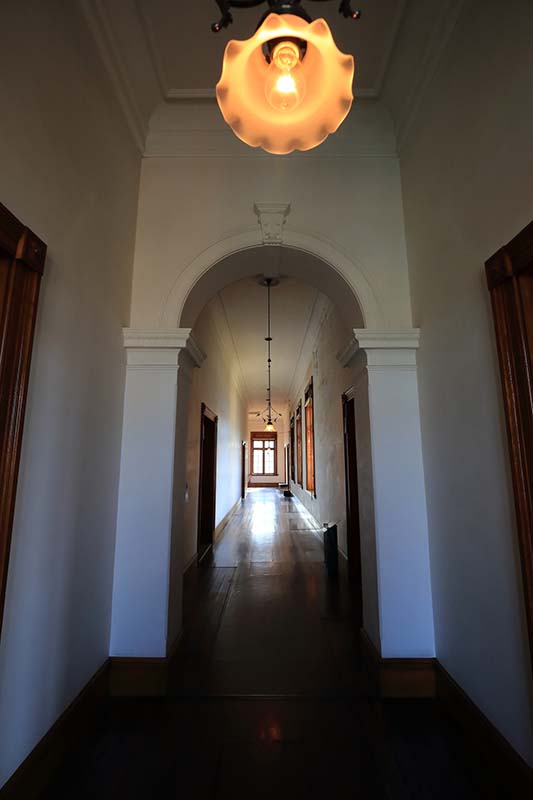
Shortly after the building was taken into use, its second-floor conference room was used as the site for the commission to determine the Russo–Japanese border on Sakhalin Island based on the Treaty of Portsmouth. When the demarcation conference ended, the representatives of both countries celebrated in the adjacent guest room. The building was used as an NYK Line branch until 1954 when the city of Otaru bought the building and made it into a museum celebrating its beautiful architecture. The Former Nippon Yusen Co building is also famous for playing the role of Otaru library in the 1995 hit movie Love Letter (an outbound link), so it’s frequently visited by the fans of the movie. The building has been closed due to conservation and renovation since 2008. The repair work should be ready in June 2023 and the building should be opened to visitors then, so if you are planning a trip to Otaru after June 2023, remember to stop by The Former Nippon Yusen Co building, too.
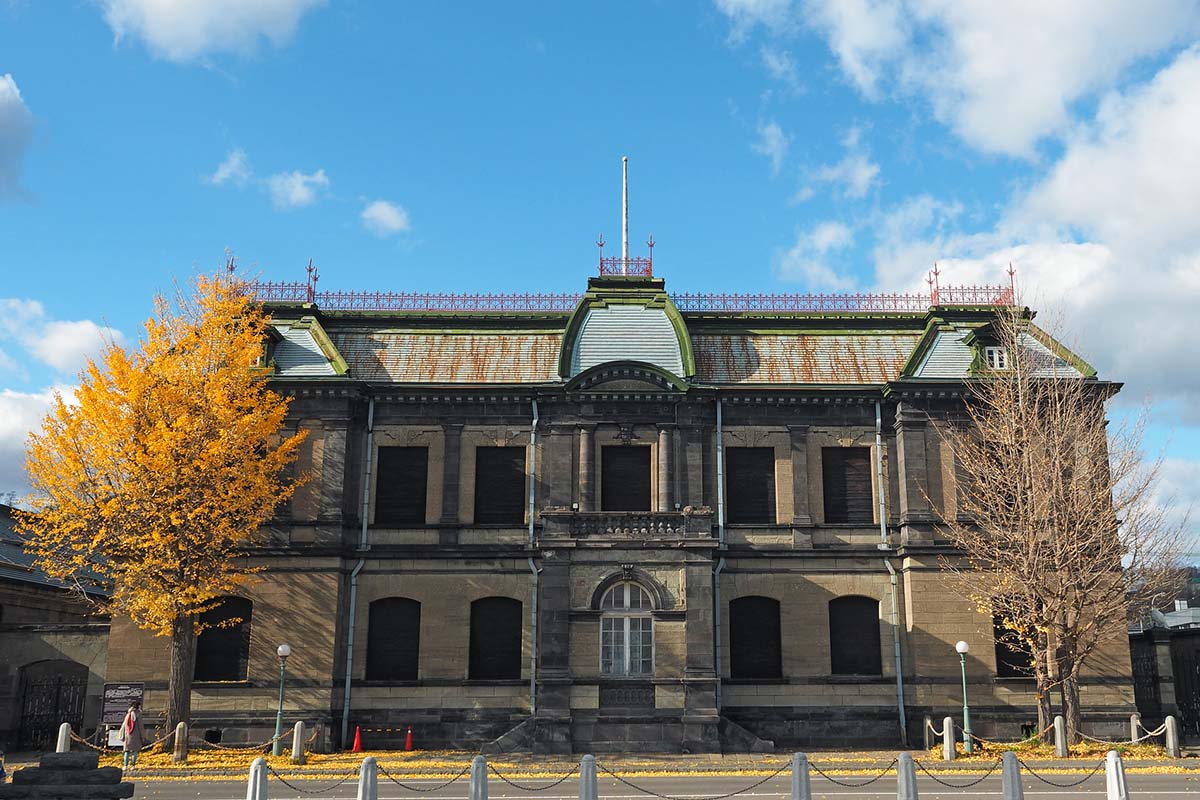
Former Otaru Branch of Mitsubishi Bank
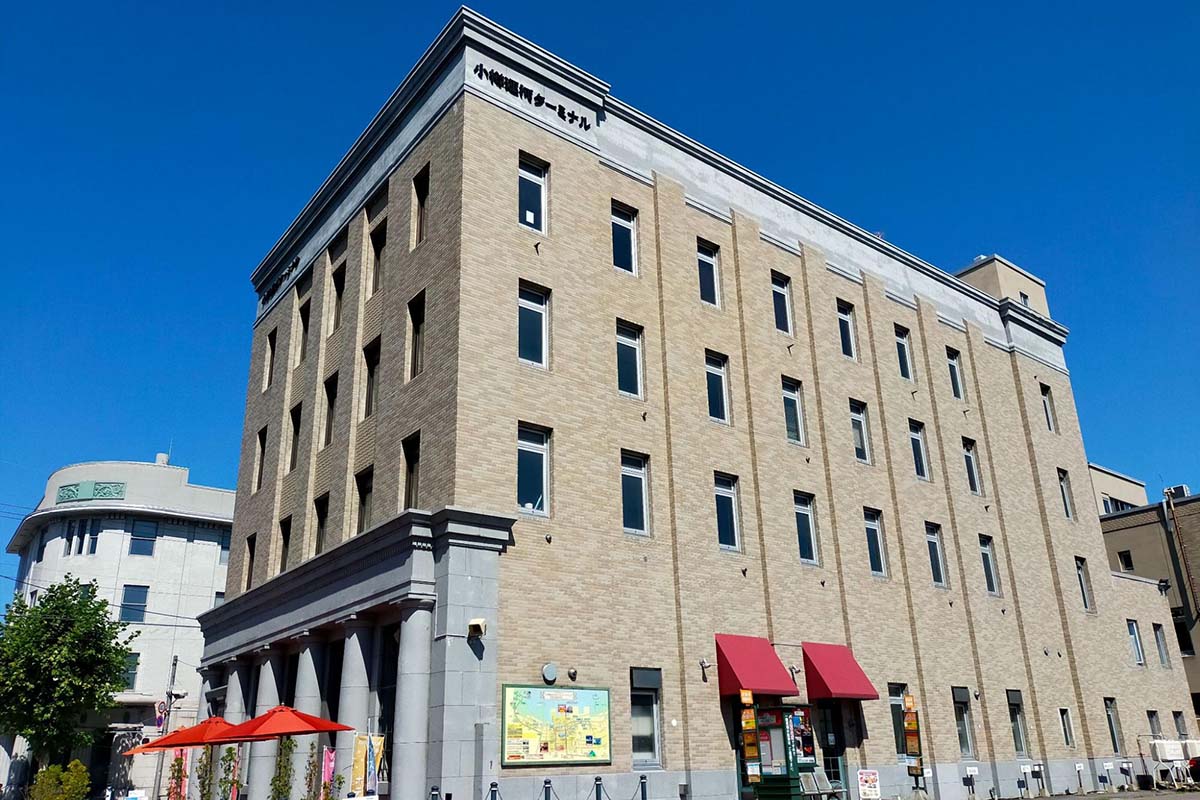
The construction of the former Otaru Branch of Mitsubishi Bank (旧三菱銀行小樽支店) was completed in 1922. This four-story reinforced concrete building stands in the middle of the Wall Street of the North district on Nichigin Street. On the other side of the street is the building of the former Hokkaido Takushoku Bank. When the former Otaru Branch of Mitsubishi Bank was finished in 1922, the exterior of the building was covered with brick-red tiles but it was changed to the current greyish color in 1937. The first-floor facade is decorated with six Greek half-columns, which represents the characteristic architectural style of the building.
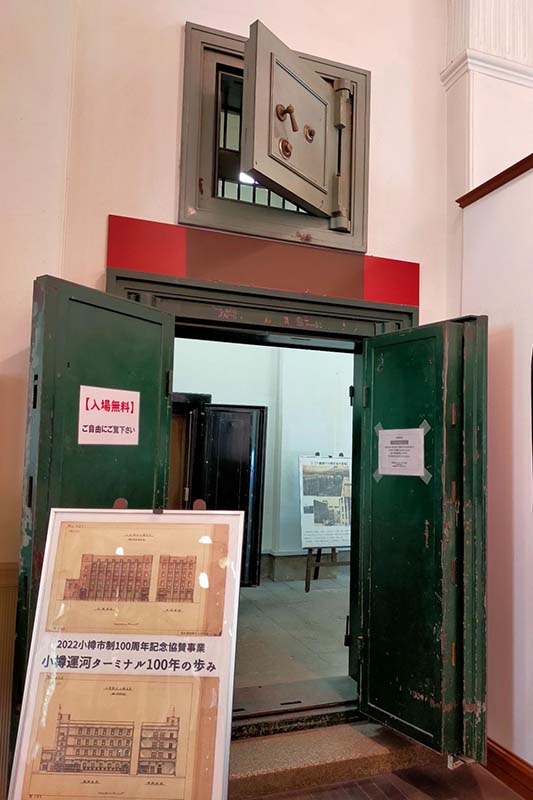
Now the building is used as Otaru Canal Bus Terminal for Hokkaido Chuo Bus (小樽運河バスターミナル(北海道中央バス)). Otaru Canal Bus Terminal is the departure point for many sightseeing buses in Otaru, so it is good to know its location. There are also some souvenir shops and Kuwataya sweets shop within the building, so you can entertain yourself by shopping while waiting for the bus. Sometimes wine tasting is arranged at the sweets shop, so if you happen to have the chance, taste some famous Otaru wines here!
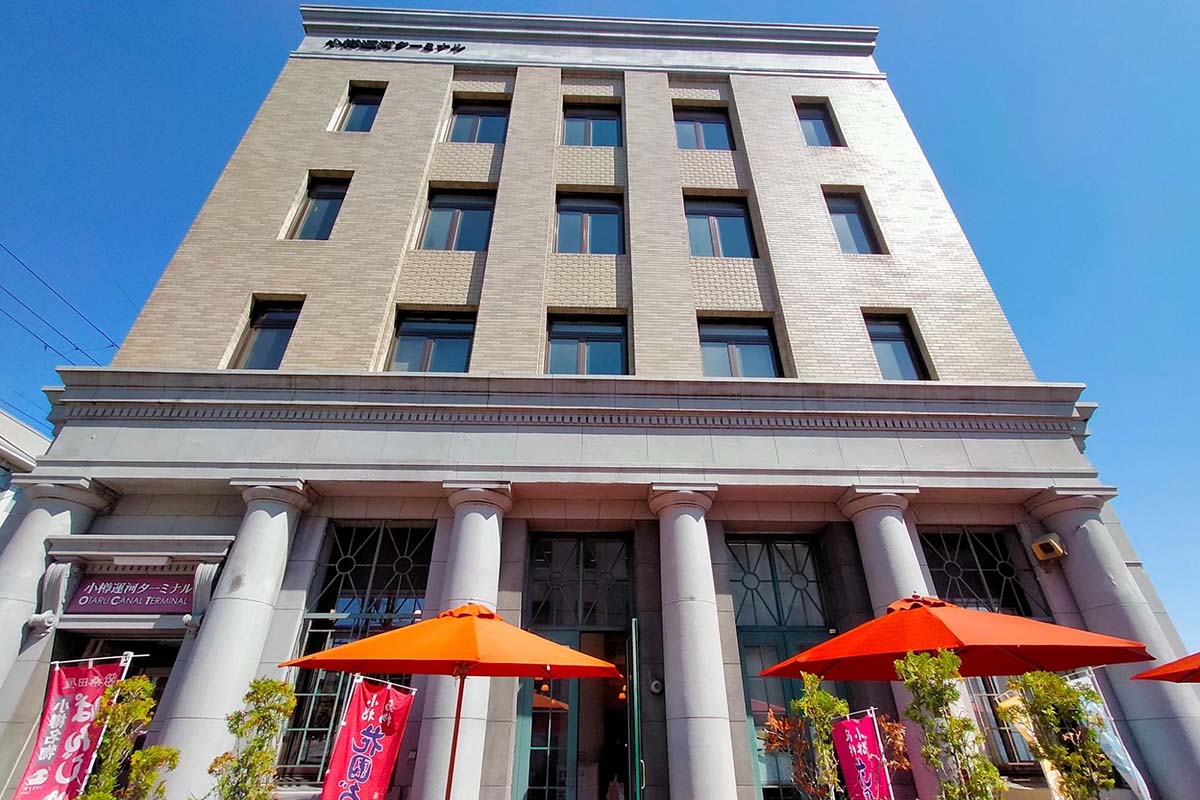

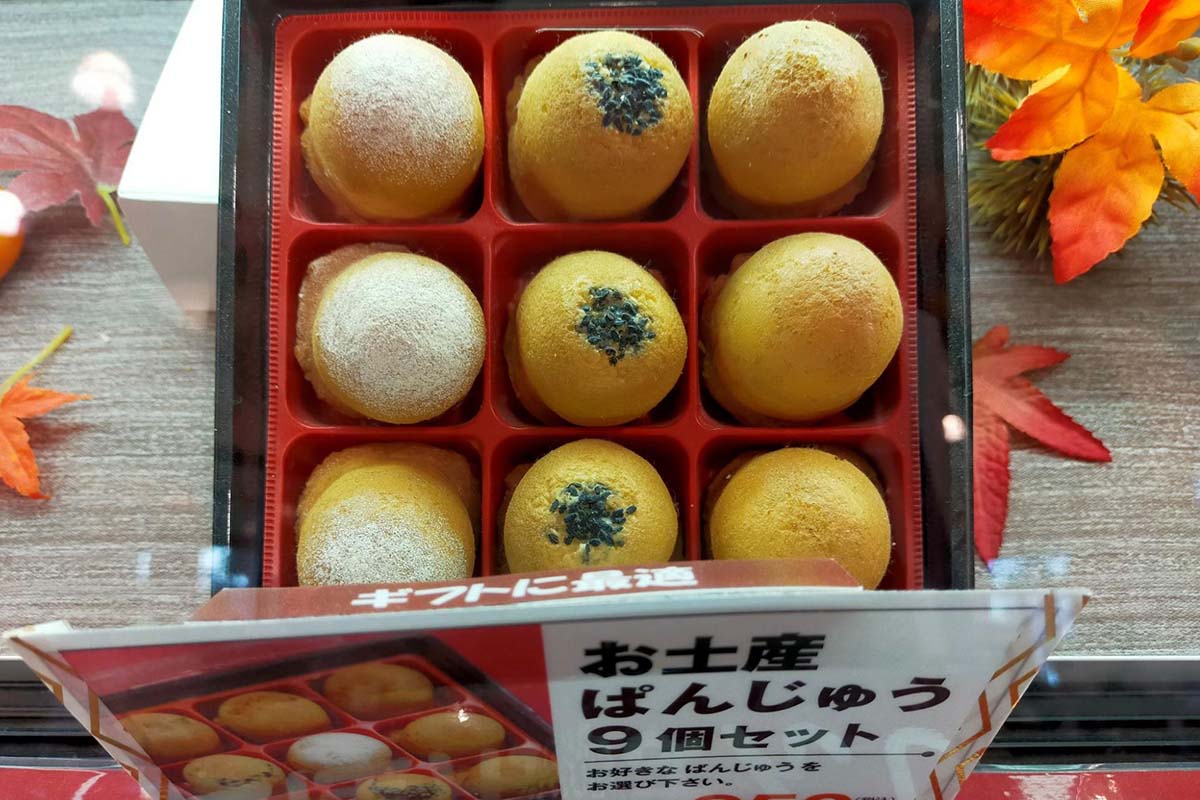
Historic buildings of Sakaimachi today
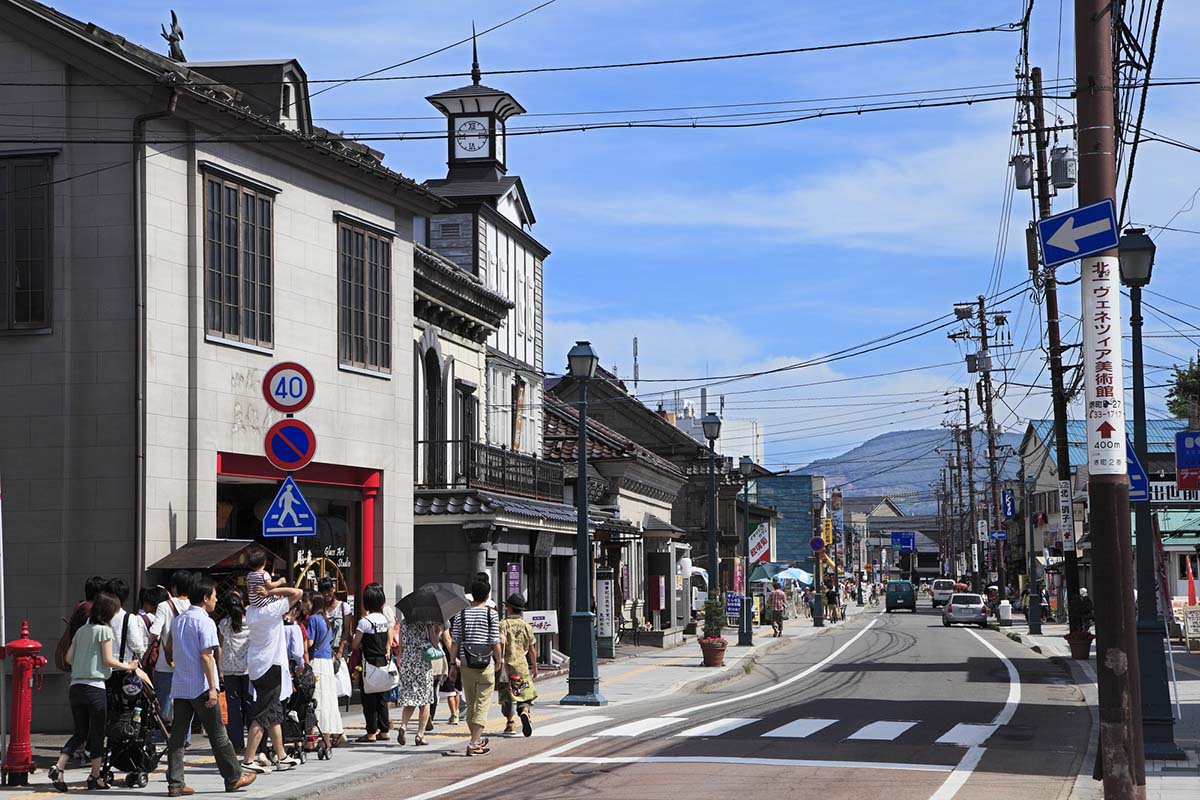
Sakaimachi street (Sakaimachi Dori/境町通り) (an outbound link) is a busy shopping street near Otaru harbor, just south of Wall Street of the North. The street is lined with old historic buildings that are well preserved, so walking the street takes you back in time to the heyday of Otaru. The street is indeed one of the most popular tourist spots in the city and a place not to miss when traveling in Otaru. The historical buildings on the street are repurposed as restaurants, museums, and souvenir shops selling especially local crafts. The renovated old warehouses and trade company offices make a picturesque streetscape and an excellent photography spot, so don’t forget to take your smartphone or camera with you, when you visit Sakaimachi street.
Former Kyosei Co.
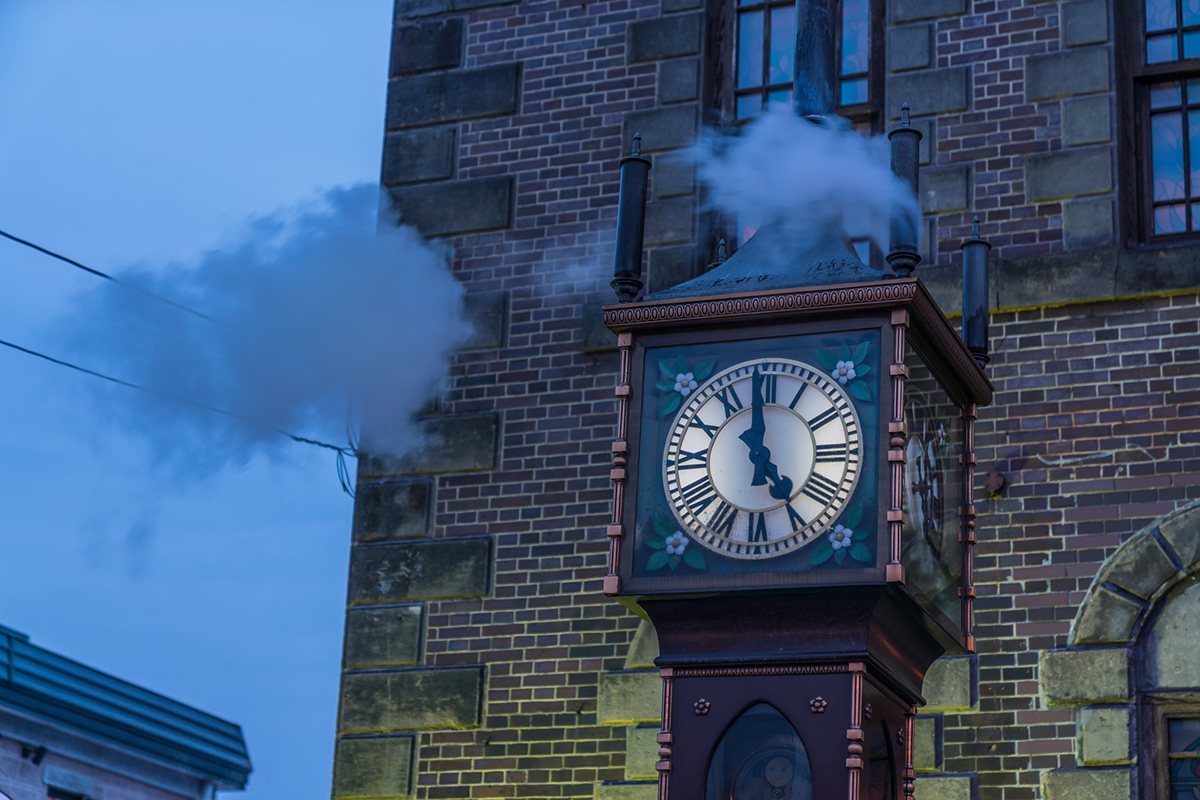
The former Kyosei Co. (旧共成式会社) office building is today the main building of the Otaru music box museum (Otaru orugorudo honkan/小樽オルゴール堂本館) (an outbound link)—sometimes referred to as Otaru Orgel Doh—that is one of the most well-known historical buildings in Otaru and Sakaimachi with the iconic steam clock standing in front of the building. Despite its English name, the main building of the Music Box Museum established in 1989 is more like a large music box shop, not a museum (the museum is in Building no. 2 close to the main building).
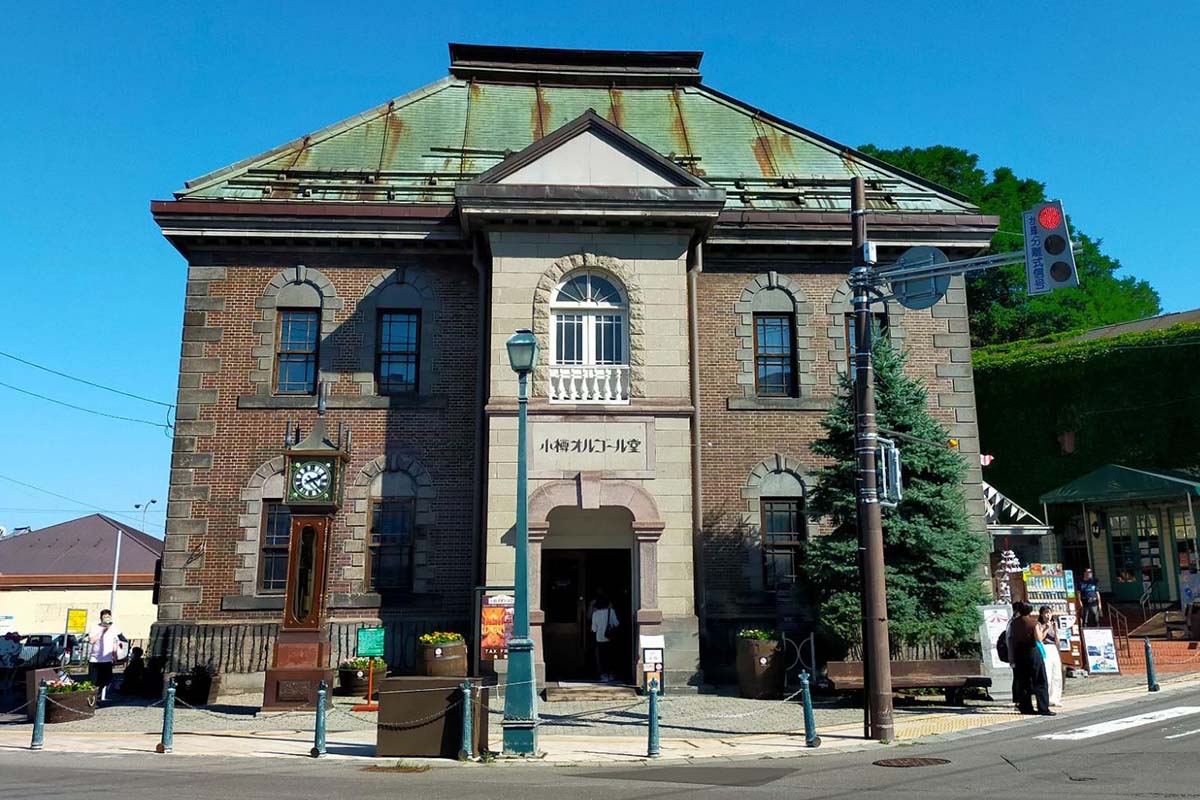
The music box store/museum has spread into 7 different locations but the main shop is located in this two-story brown brick on wooden framing building from 1915 that used to serve as the former Hokkaido headquarters of Kyosei Co. Historical brick buildings are quite rare in Otaru; most of the old buildings are made of stone. Kyosei Co. was a rice-milling and rice-trading company, so the location gave the company great access to the harbor. The front part of the building used to be the office of Kyosei Co. while the back part served as a warehouse. You can find the building at the Marchen intersection in Sakaimachi.
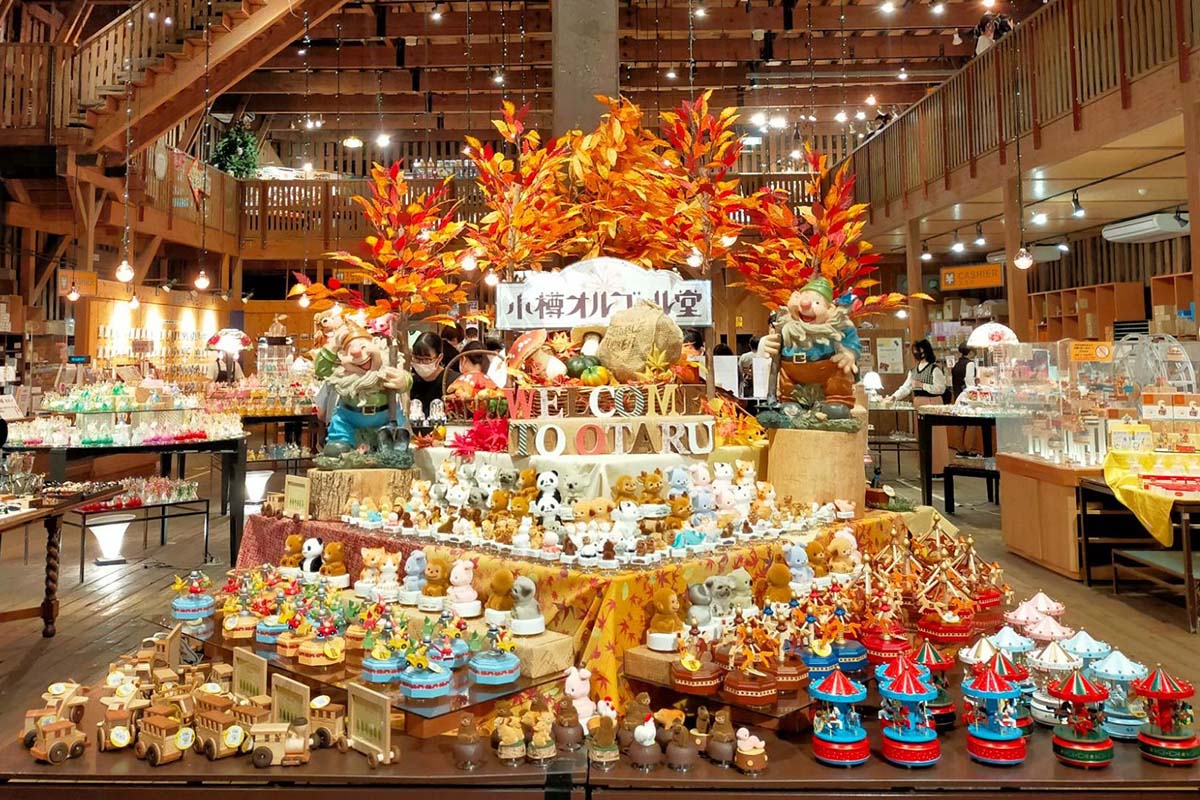
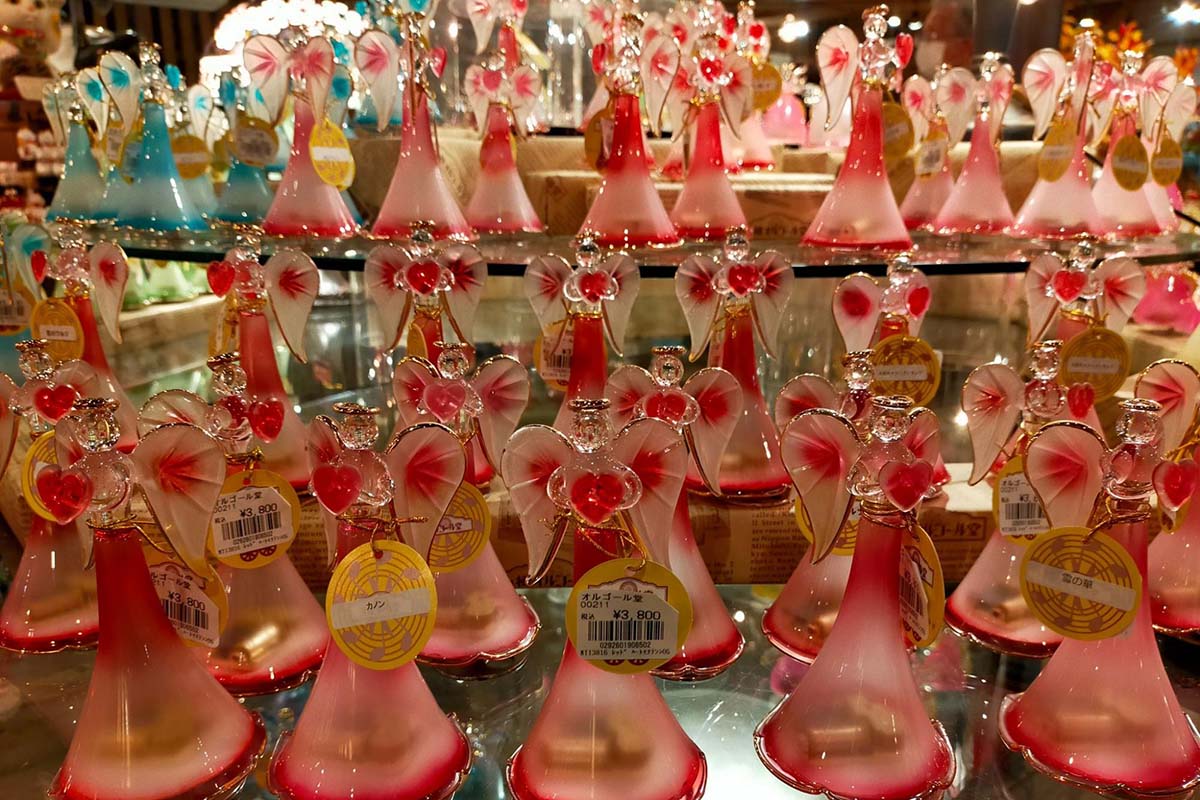
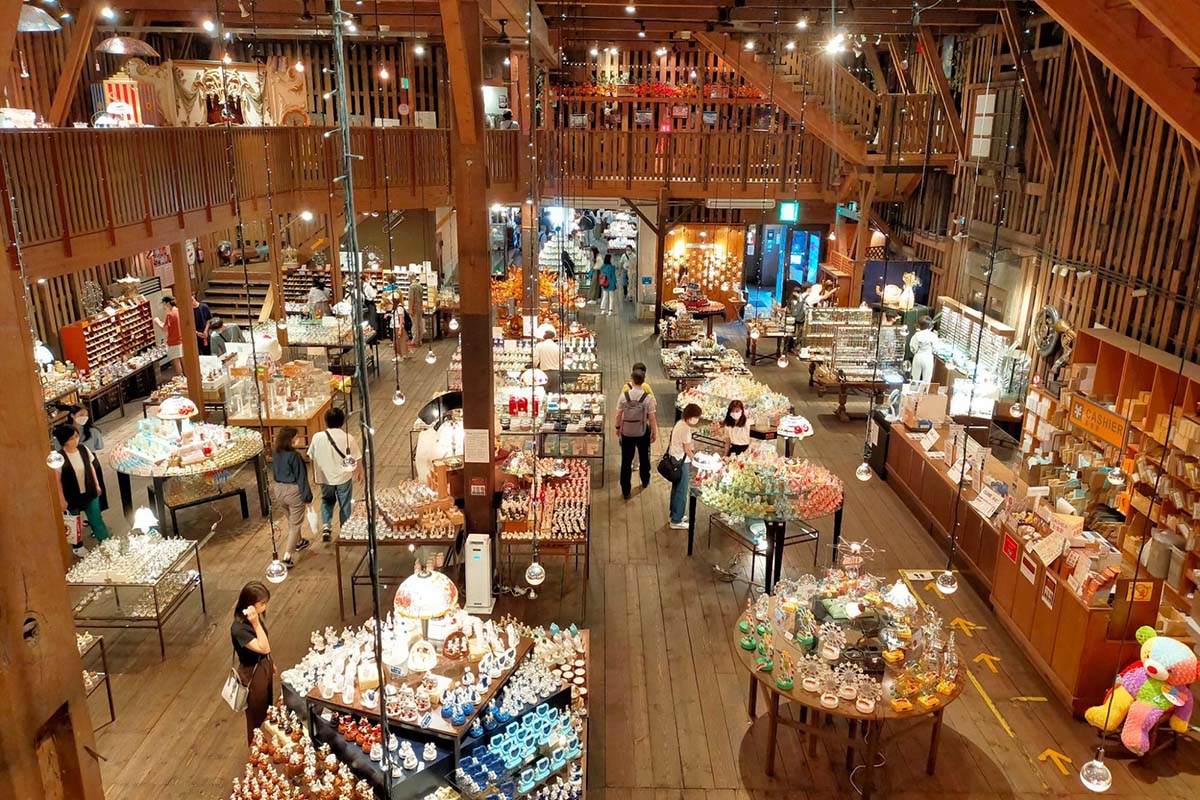
Music boxes have been manufactured in Otaru since the 1910s. There is no special connection between music boxes and Otaru, it was just thought that it would be great to add another line of crafts to Otaru’s assortment. Of course, it was easy to combine music box making with glasswork—the traditional art of Otaru—and create a new type of glassware. The music boxes are also thought to have a kind of retro feeling in them, which matches well with the historical cityscape of Otaru. And there is much to see at the museum! The museum boasts about 3,200 different music box types and there are about 38,000 music boxes in total. There are also craft experience workshops in which you can create a music box of your own design (not in the main building, though).
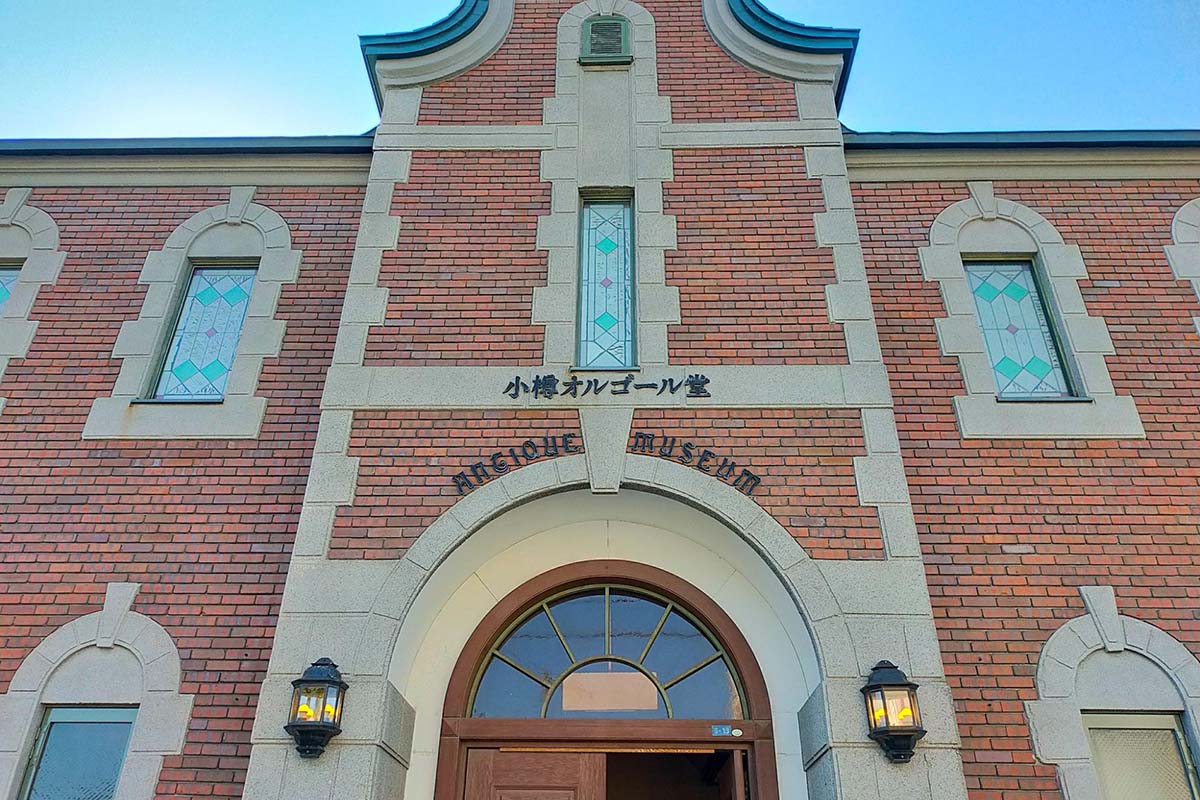
If you want to see some historic music boxes, head to Hall number 2 which hosts an exhibition of old music boxes. Hall number 2 is located by Sakaimachi Street about 1 minute walk away from the main building. There is also an Aeolian pipe organ made in England in 1908 in Hall number 2 and you can even listen to the organ play some music.
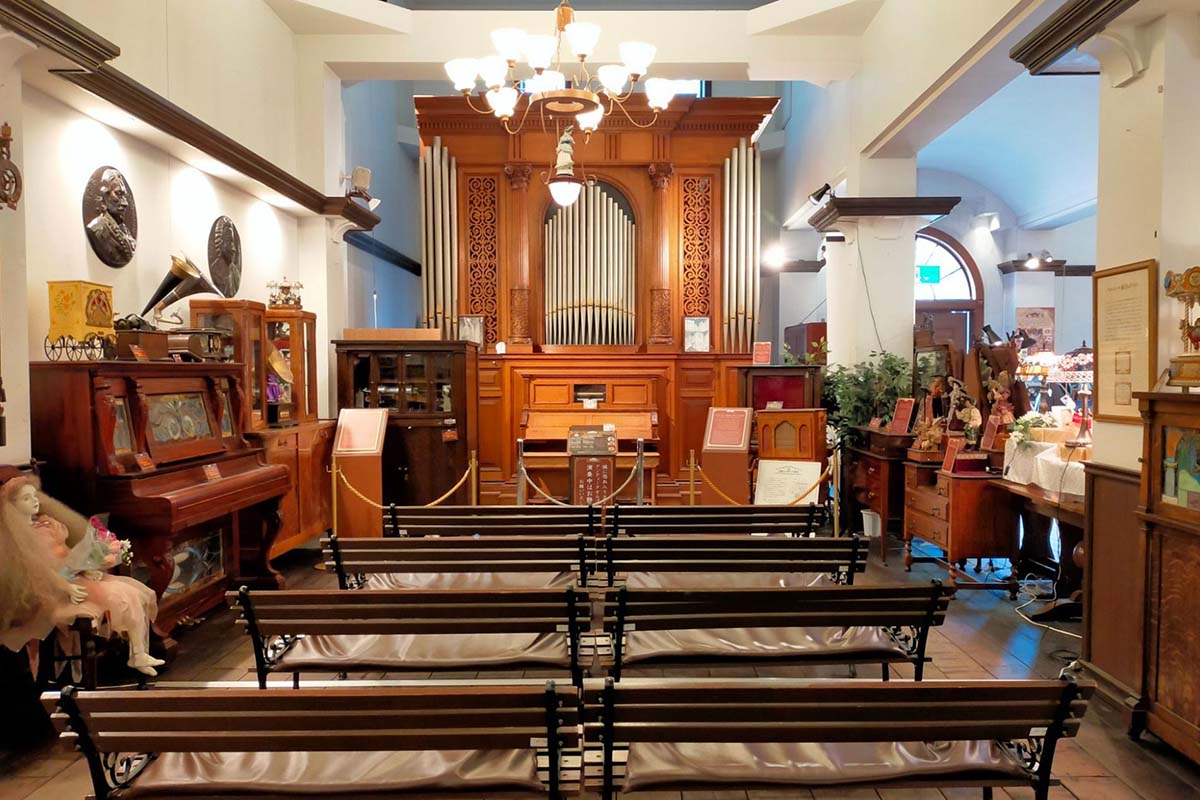
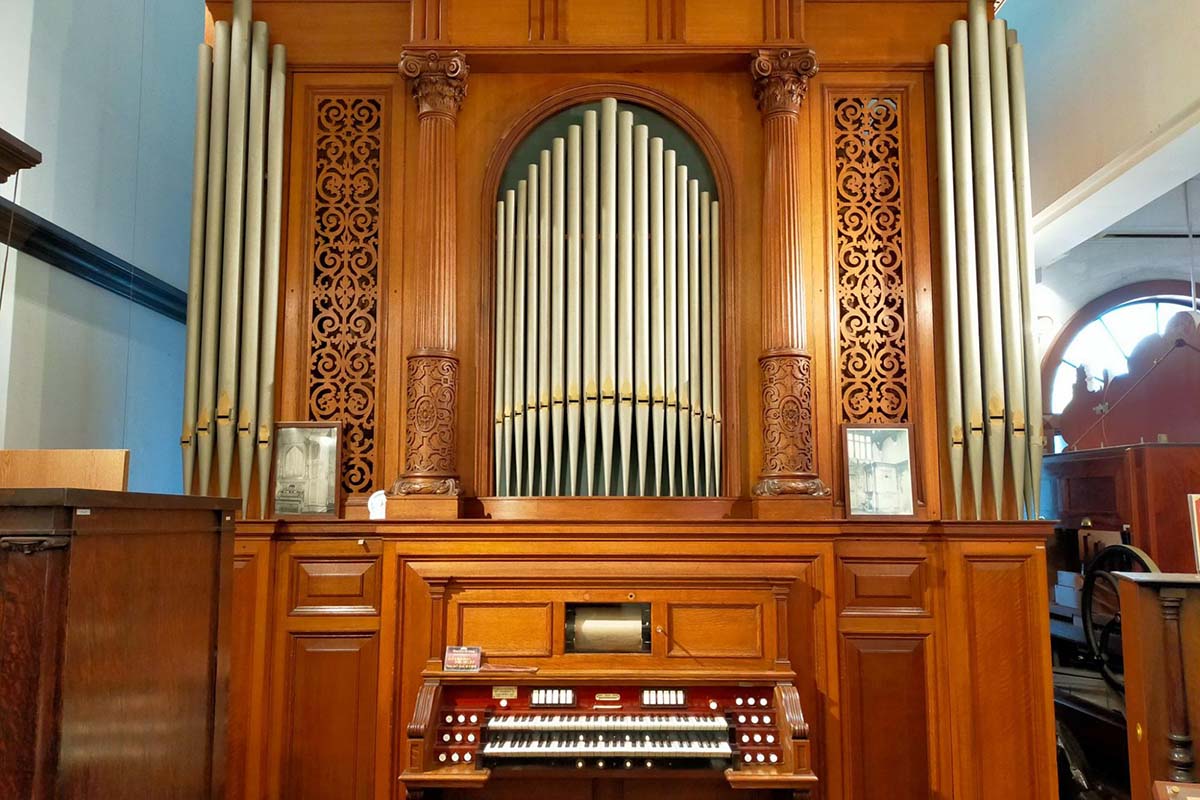
Former Otaru Branch of Chuetsu Bank
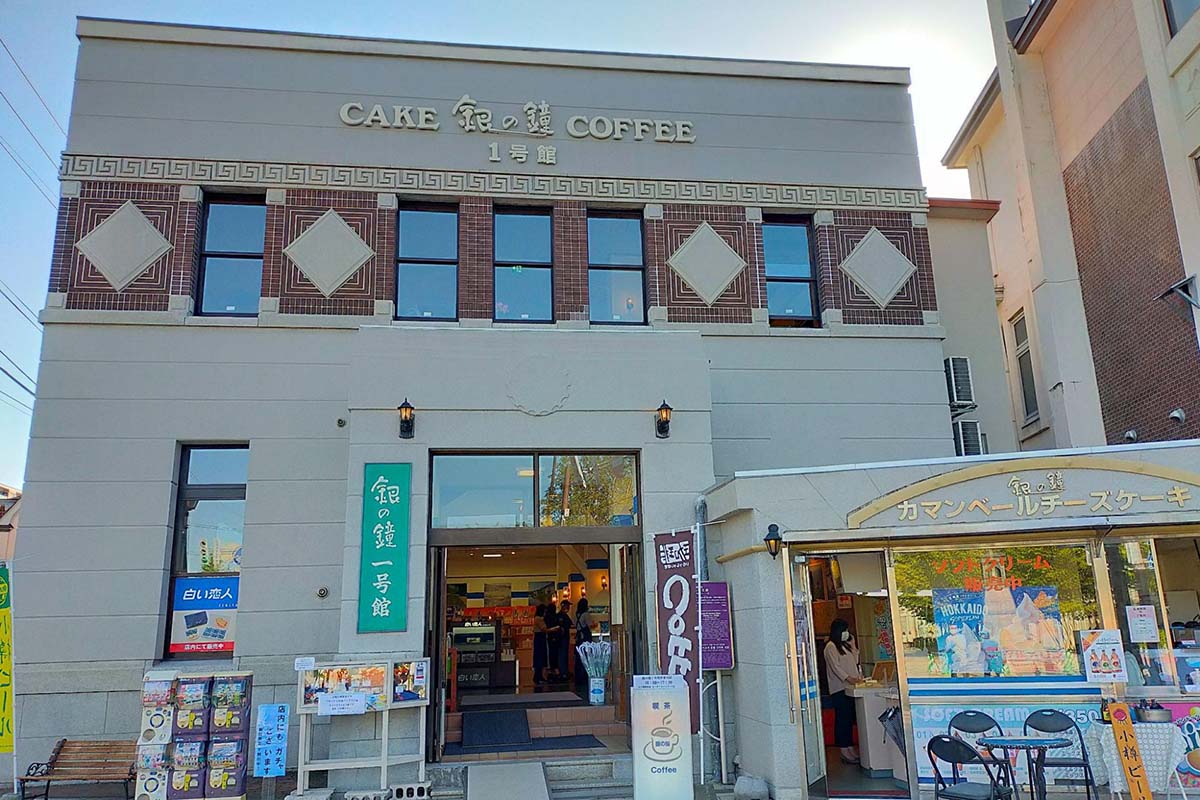
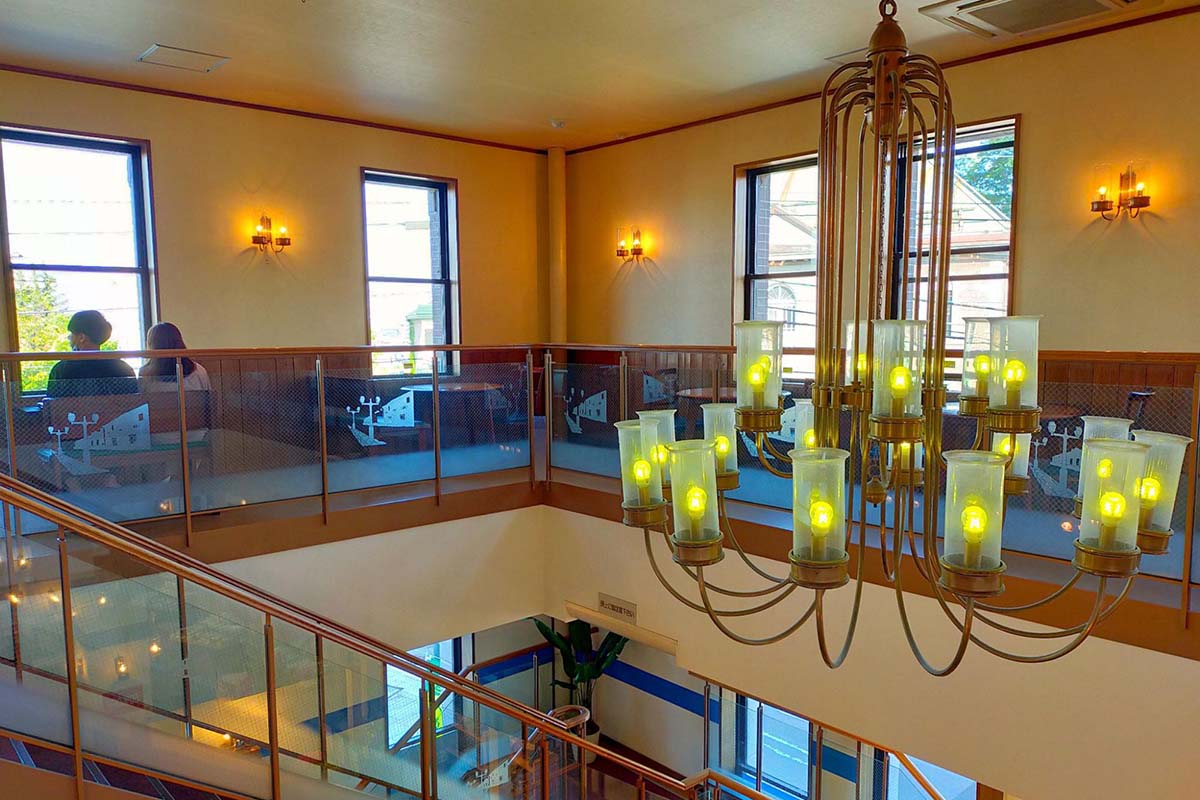
Also the former Otaru Branch of Chuetsu Bank (旧中越銀行小樽支店) stands in the Marchen intersection in Sakaimachi. The construction of this two-story reinforced concrete building was finished in 1924 and it served as a Chuetsu Bank branch office until 1943 when Chuetsu Bank was merged to become part of Hokuriku Bank. The former Otaru Branch of Chuetsu Bank was renamed Hokuriku Bank Minami Otaru Branch 20 years later in 1963 (it’s a mystery what it was called the 20 years between the merger and renaming). After the branch was closed, the building was used as a sewing factory for work clothes and was then adapted to its current use as a souvenir shop and cafe Silver Bell Building No. 1 (Gin no kane ichigokan / 銀の鐘1号館) (there are also buildings no. 2 and 3 close the building no. 1). You can buy souvenirs and other miscellaneous goods at the store on the 1st floor and enjoy a cup of coffee or soft-serve ice cream at the coffee shop on the 2nd and 3rd floors.
Former Kimura Warehouse
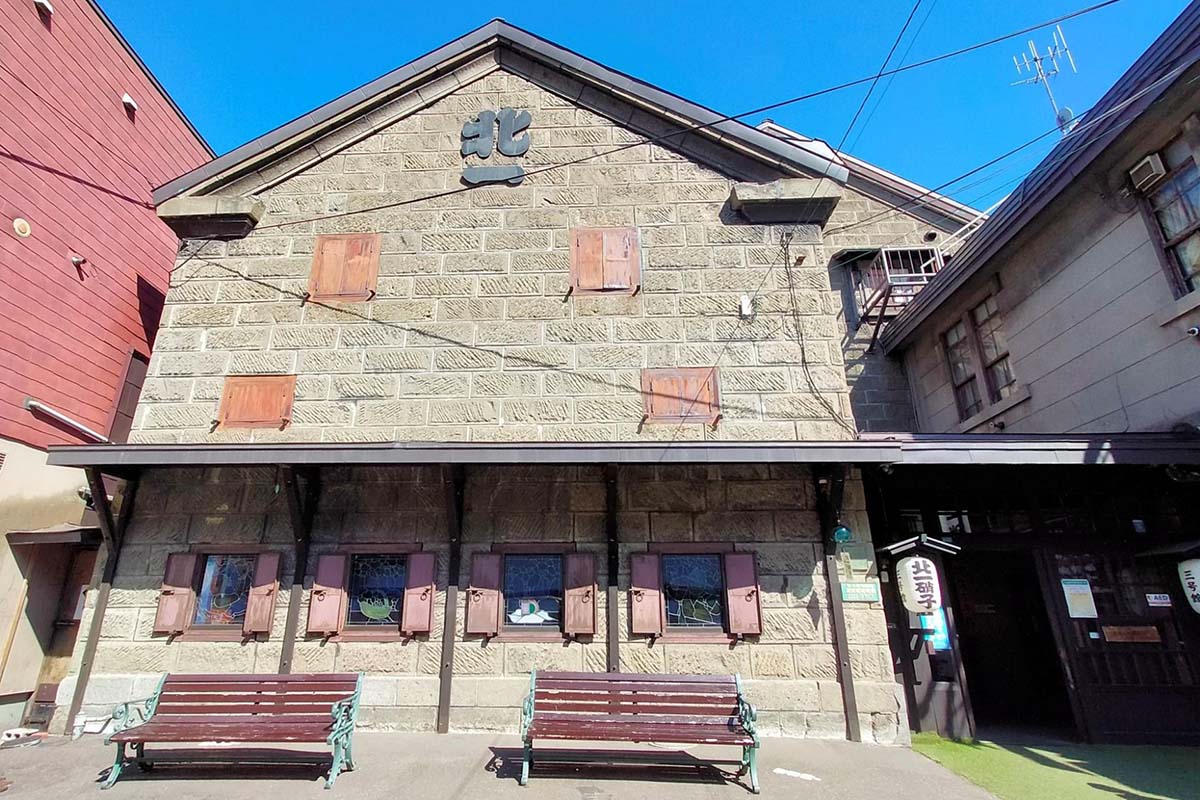
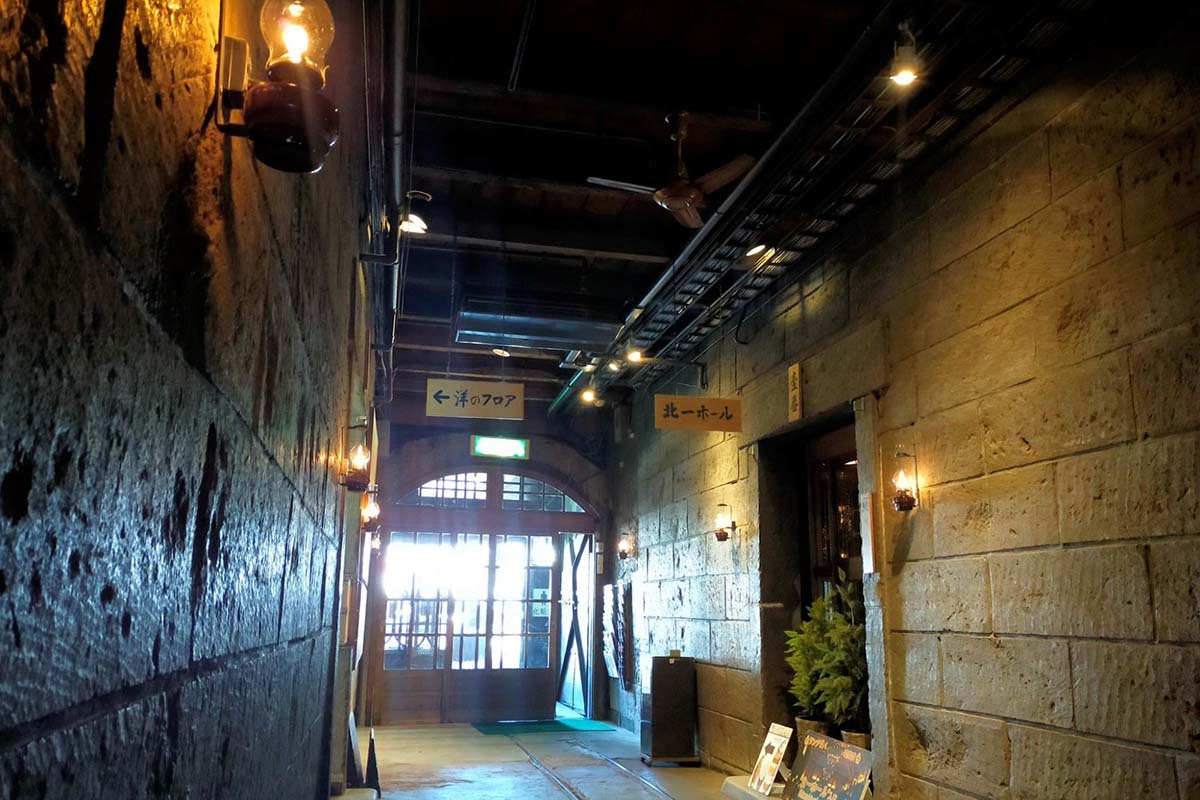
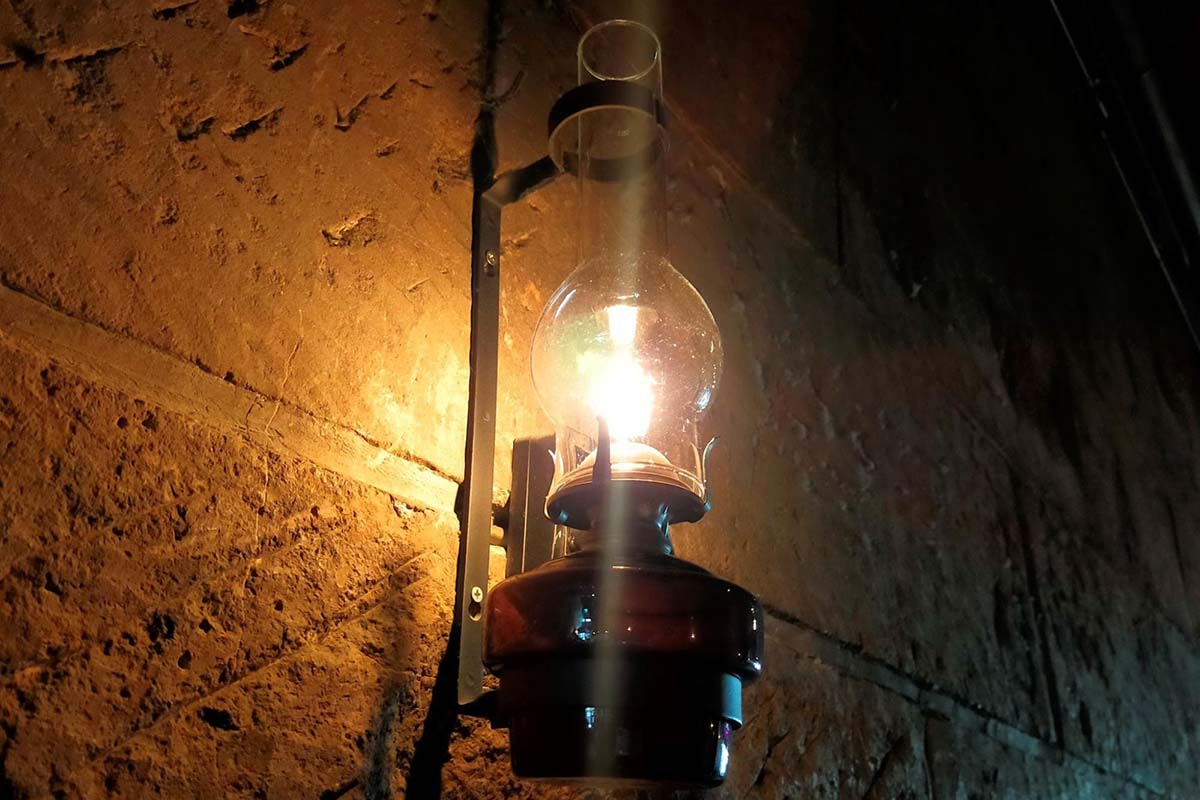
Former Kimura Warehouse (旧木村倉庫) used to be a transit warehouse for herring products. This wood-framed stone building built in 1891 is one of the oldest buildings introduced in this blog column. The inside of the building was divided in two by a central corridor and you can still see the trolley rails leading to the port in the corridor.
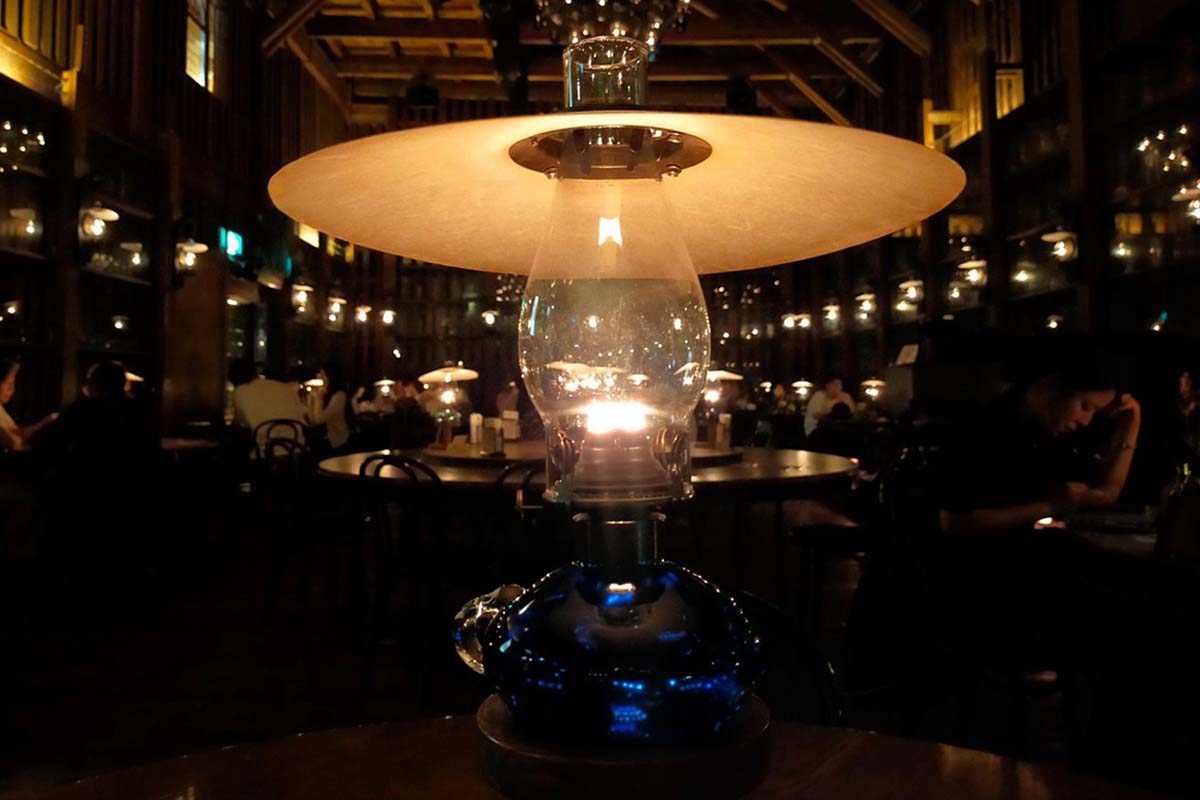
The warehouse was turned into a glassware shop in 1983. Now it is part of the Kitaichi Glass complex spreading into many of the other warehouses in the area, too. The Former Kimura Warehouse is now called Kitaichi Glass Building No. 3 (Kitaichi garasu sangokan / 北一硝子三号館) or Kitaichi Hall (北一ホール) and it hosts an outlet shop for glass products as well as a cafe with numerous oil lamps and a wonderful atmosphere. The staff has to light all the 150 oil lamps by hand every day when the shop is open, which is an interesting performance in itself.
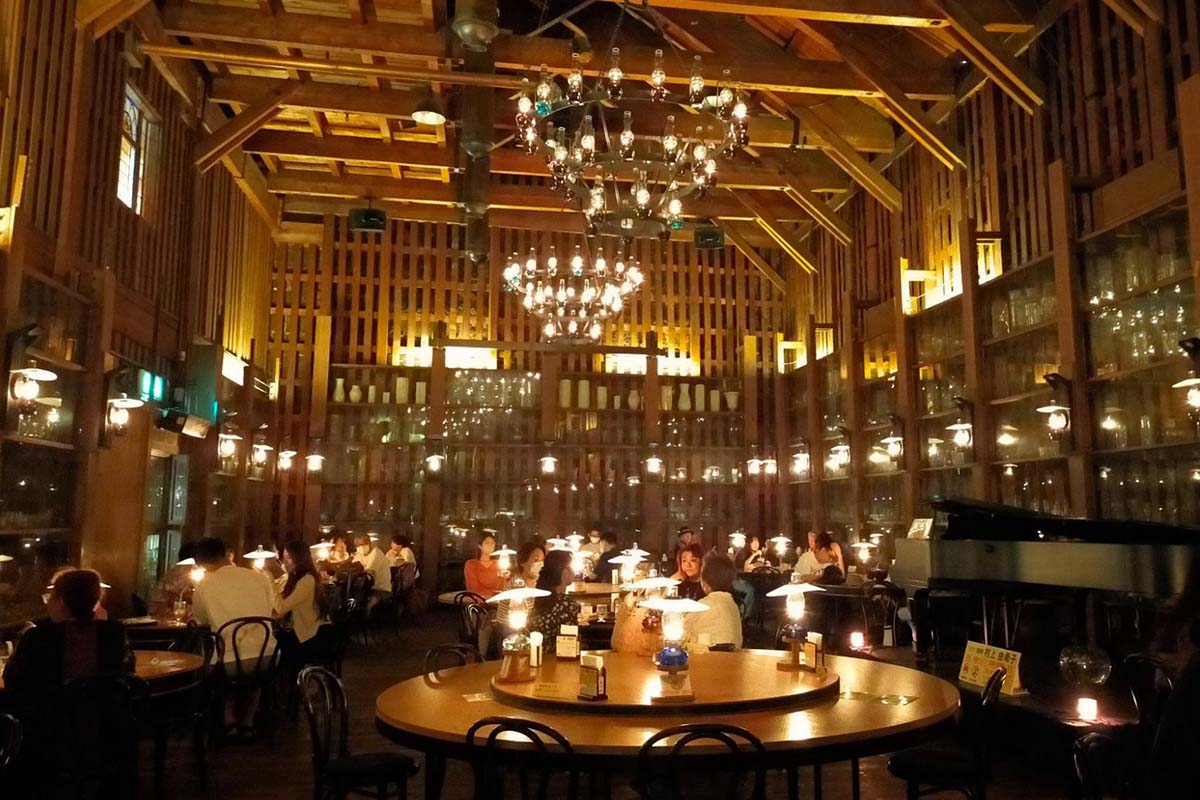
Other landmark buildings in Otaru
The historic buildings introduced above are located in central Otaru close to the Otaru station and the harbor. In the last section of this blog column, we’ll introduce some buildings in the suburbs of Otaru. Also, the buildings introduced above have western architecture but here we introduce some Japanese-style buildings, too. Some of these buildings are located quite far from the city center and it’s better to go by car or bus. Feel free to contact us to help you with your tour planning and arrangements!
Tomioka Catholic Church
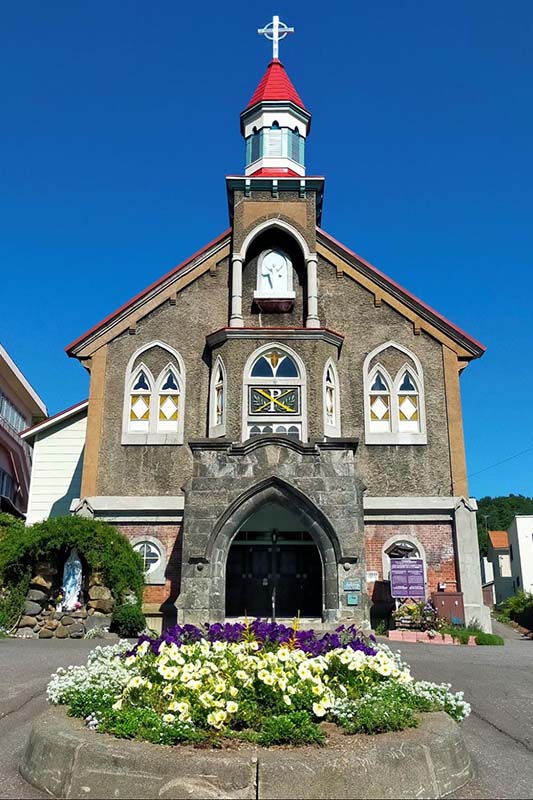
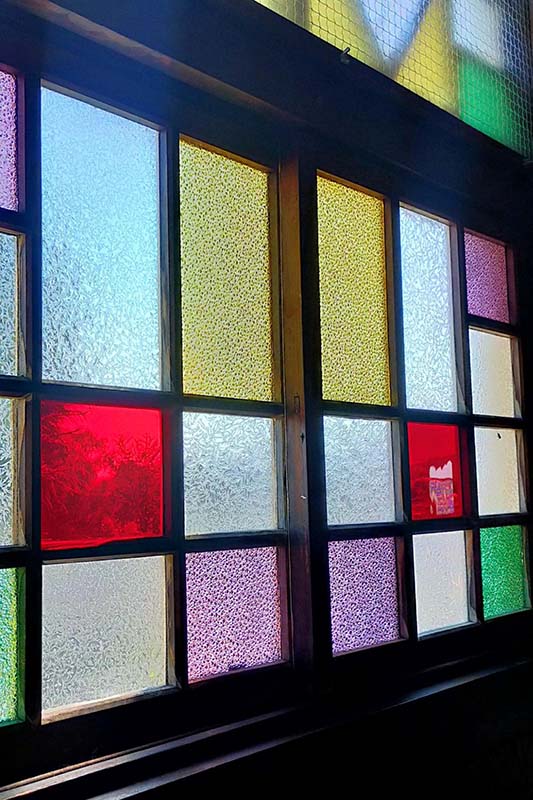
Tomioka Catholic Church (カトリック富岡教会) is located quite close to Otaru station. Catholic missionary work in Otaru started already in 1882, but the construction of Tomioka Church was finished as late as 1929. The church is furnished with a Gothic octagonal bell tower and lovely stained glass windows. The chapel is beautiful especially when the sunlight comes in through the colorful windows on the second floor. The church is open all day and anyone can visit it and take photos freely. Just remember to keep quiet within the church.
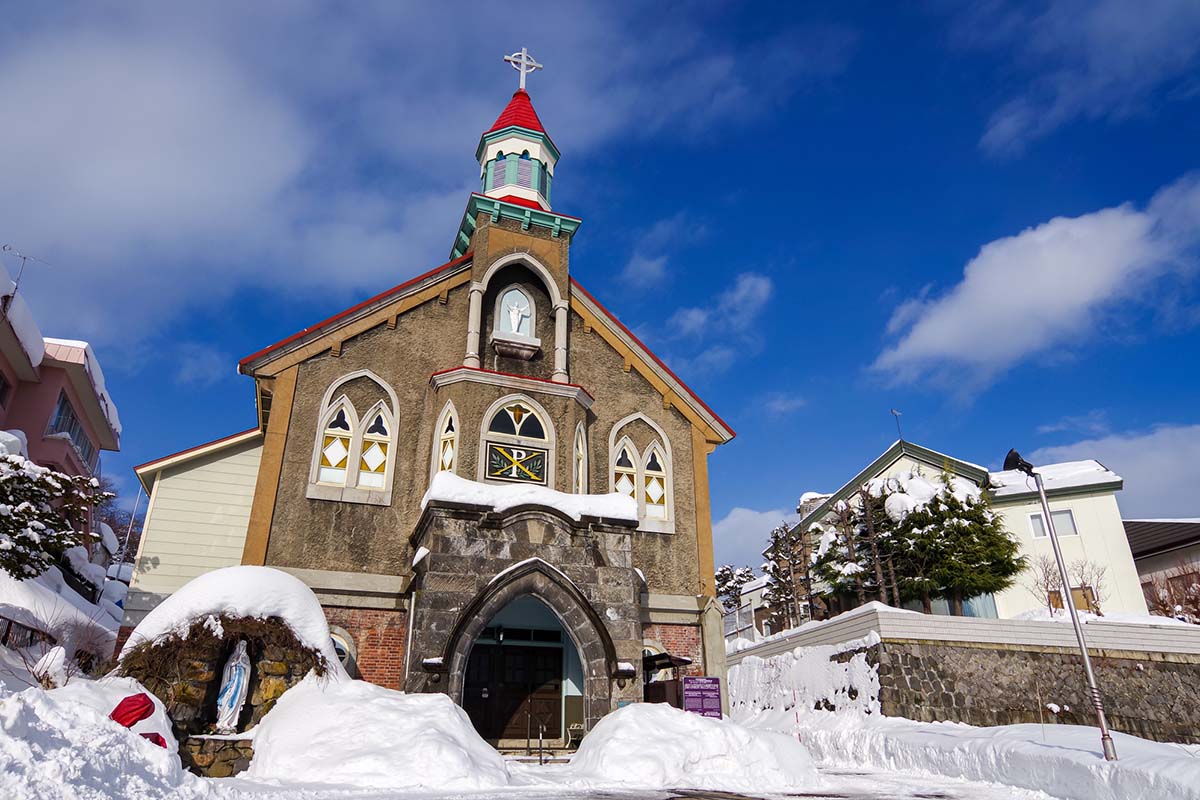

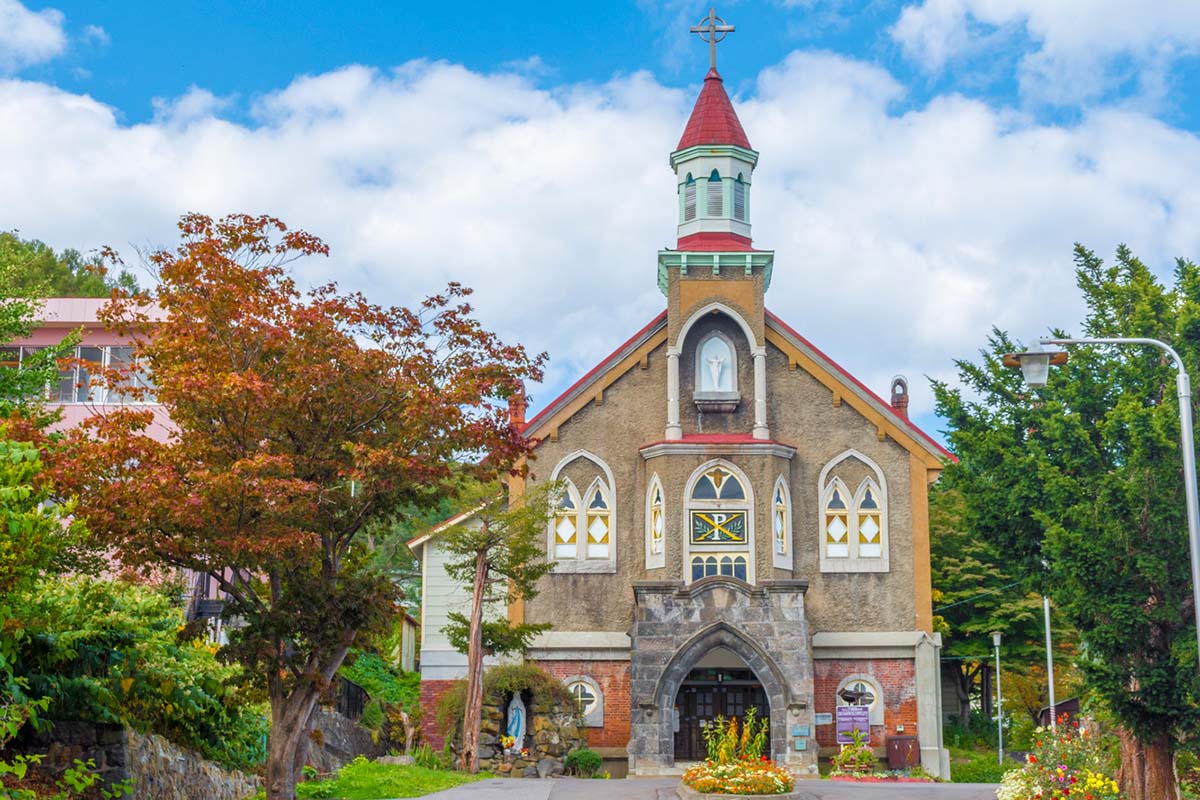
Former Otaru Guaranteed Milk Co.
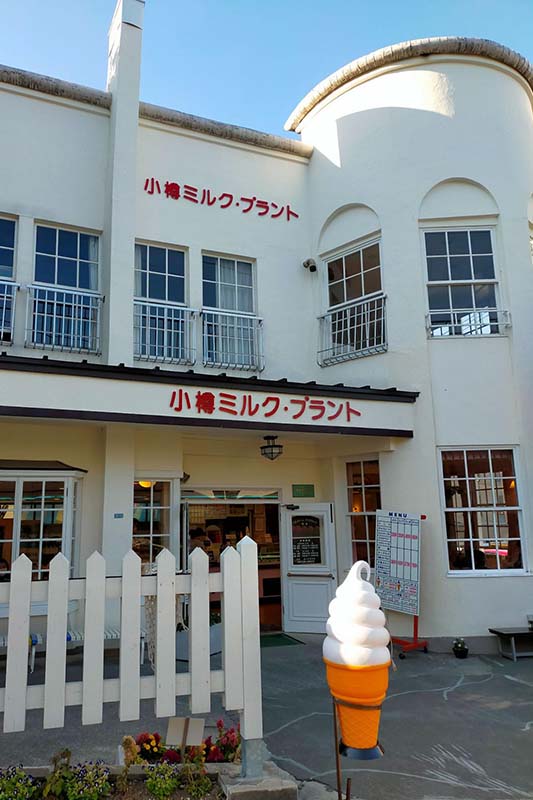

The former Otaru Guaranteed Milk Co’s (旧小樽保証牛乳 (株) ) wooden 2-story building built in 1936 used to be an office of the company owned by local dairy farmers. There used to be a factory behind the building where milk was produced and sold. Now the building is called Otaru milk plant (小樽ミルク・プラント) and it hosts an ice cream bar. Otaru is not only famous for its sushi and beer but also its different desserts and sweets (for example mochi). Otaru milk plant is THE place to have some ice cream in Otaru! It wouldn’t be too much of an exaggeration to call this soft-serve ice cream the soul food of Otaru dwellers. The shop boasts numerous flavors, for example, simple milk, Yubari melon, and grape, to choose from. The most iconic servings are the New York jumbo portion which is about 30 cm (almost one foot) tall and the rainbow soft-serve ice cream with a mix of different flavors (and thus colors). The place is very popular, so if you are planning to visit the Otaru milk plant during the peak tourist season, prepare to stand in a queue for a while.
Otaru City Public Hall
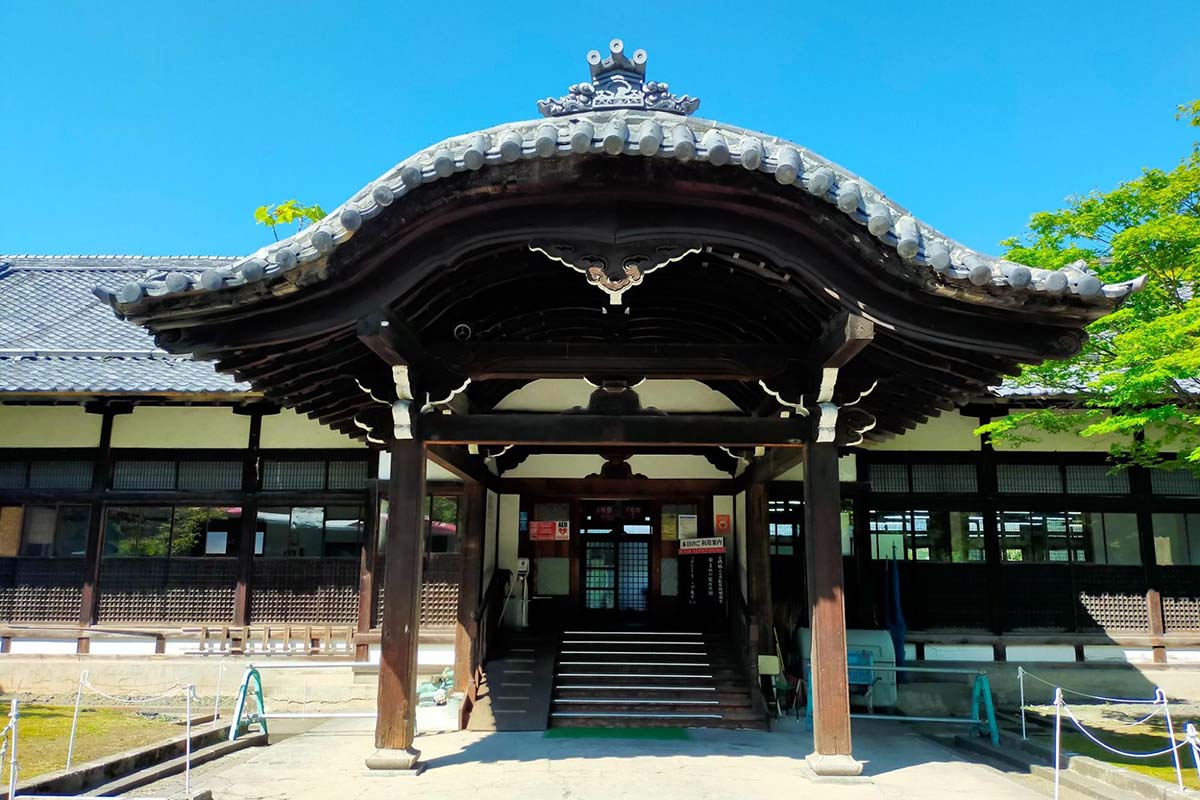
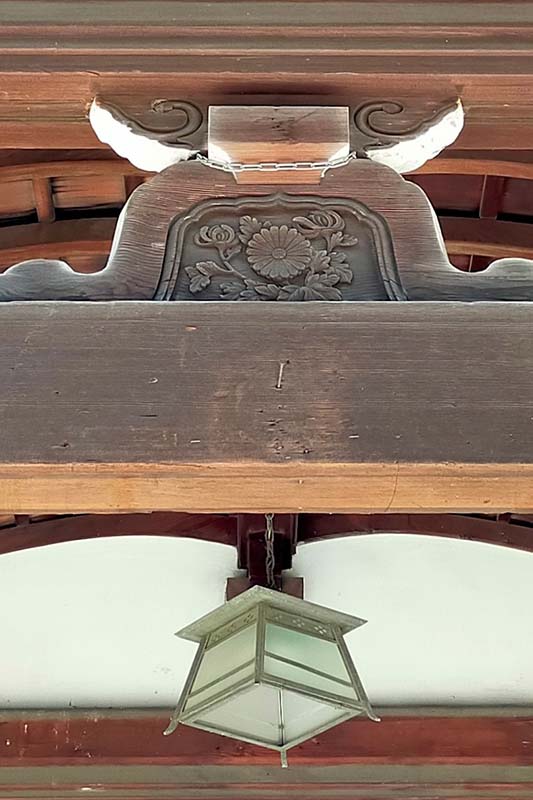
Not all the historical buildings in Otaru are of western design. The Japanese-style Otaru Public Hall (Otaru-shi kokaido/小樽市公会堂) (Former Otaru Ward Public Hall/旧小樽区公会堂) was built in 1911 as an imperial inn for the Crown Prince (later Emperor Taisho) when he visited Hokkaido, and it became a public hall after his visit. The building was moved about 50 meters from its original place to its current location in 1960 due to the construction of a civic hall. After Otaru Public Hall was towed to its new location, the layout of this one-story wooden building was remodeled while the facade stayed the same. When the relocation and expansion work was completed in 1961, the Okazaki Residence Noh Stage was combined with the main building. Noh (能) is a classical Japanese form of theater drawing its themes from traditional literature and performing the story in the form of dance.
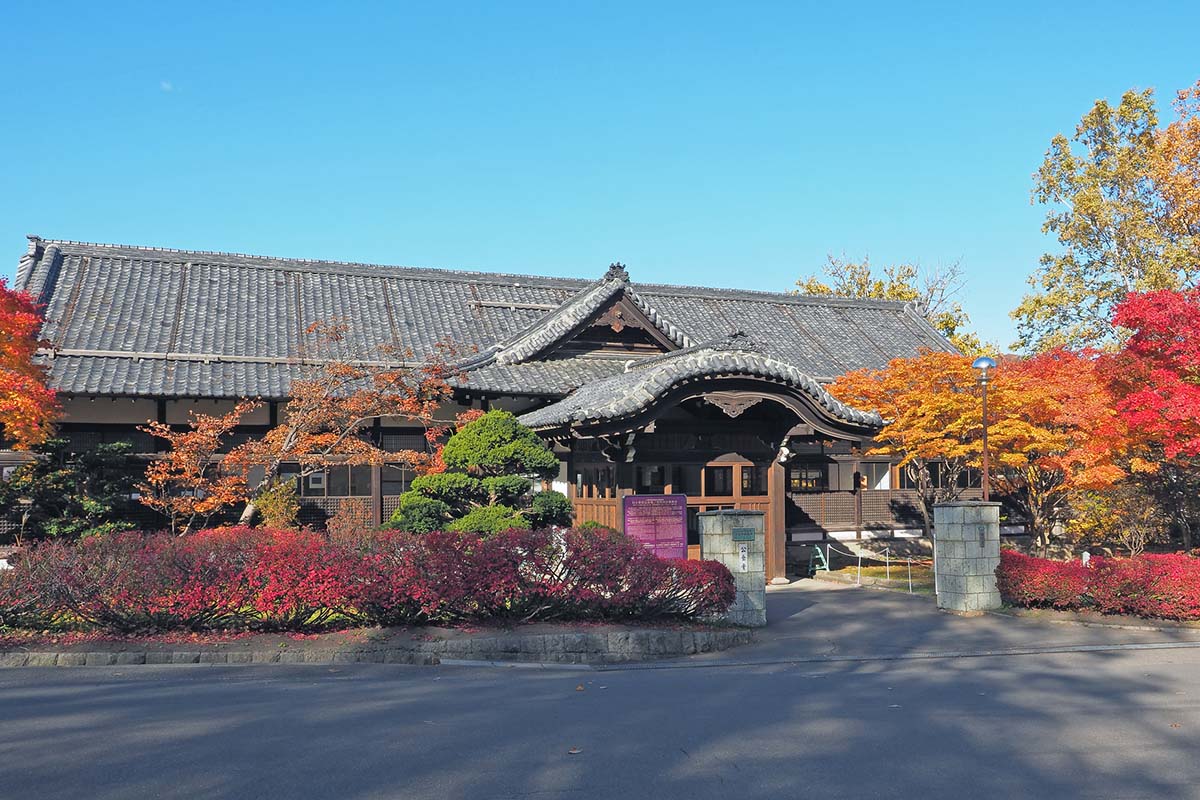
Herring mansion

Another building full of Hokkaidoan history is the Herring mansion of Otaru city (Otarushi Nishin Goten/小樽市鰊御殿) standing on top of a cliff in the western part of the city. The Herring mansion was built in 1897, not in Otaru but the village of Tomari, some 50 kilometers to the southwest of Otaru. Herring mansions were built as luxurious houses for the super-rich fishery moguls that made their fortune with herring fishing and trade in the 19th century and the first half of the 20th century. The Herring mansion of Otaru city belonged to Fukumatsu Tanaka, who was the herring magnate in Tomari. The 29-meters-wide and 13-meters-deep mansion of Tanaka is made of wood, so it was easy to take it apart, move it to its current location in Otaru, and renovate it in 1958. You can read more about Tomari and its neighboring towns in our earlier blog column Iwanai: The Town of Blue Ocean and Delicious Seafood.
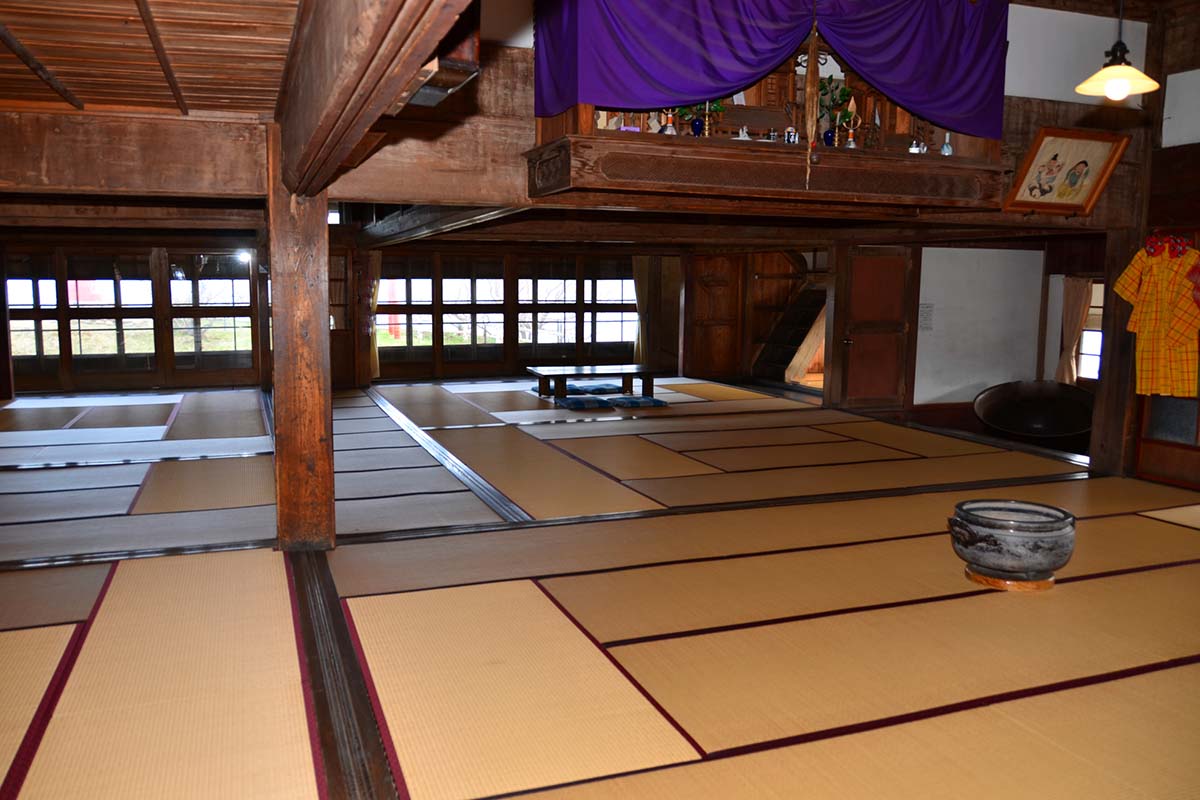
Now the Herring mansion of Otaru city is designated as a tangible cultural property by the Hokkaido government and it displays photographs about the history of herring fishing in the area and the kind of lifestyle the fishery workers lead as well as fishing equipment and domestic utensils of the time. Despite being called a mansion, the Herring mansion also includes crude sleeping quarters for about 120 workers catching the herring and processing the fish for trade, not just the luxurious premises used by the rich business owner and his family.
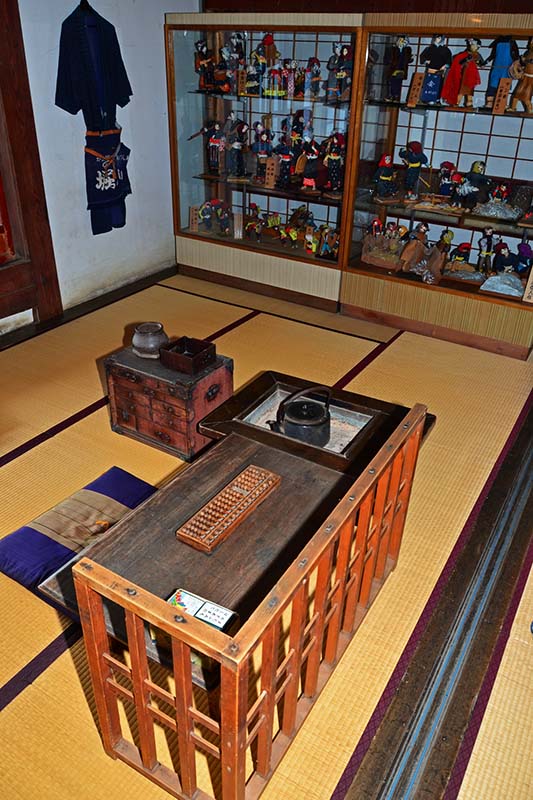

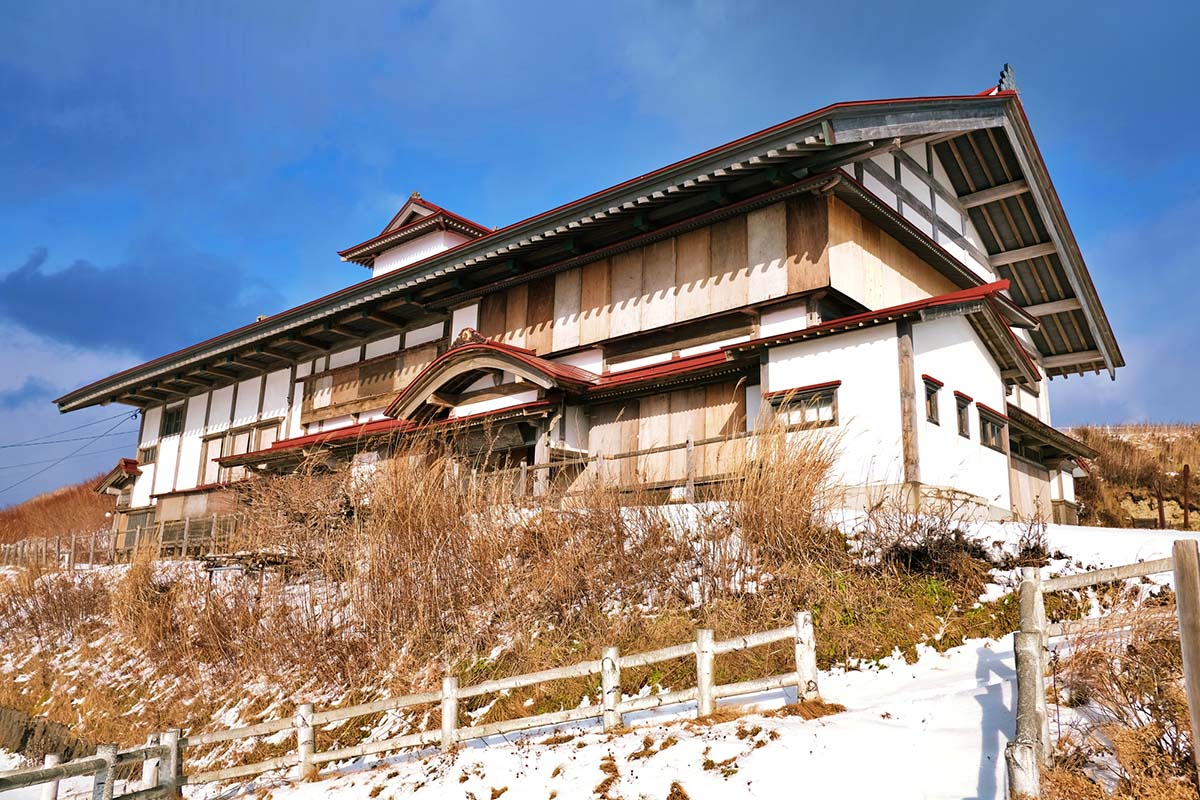
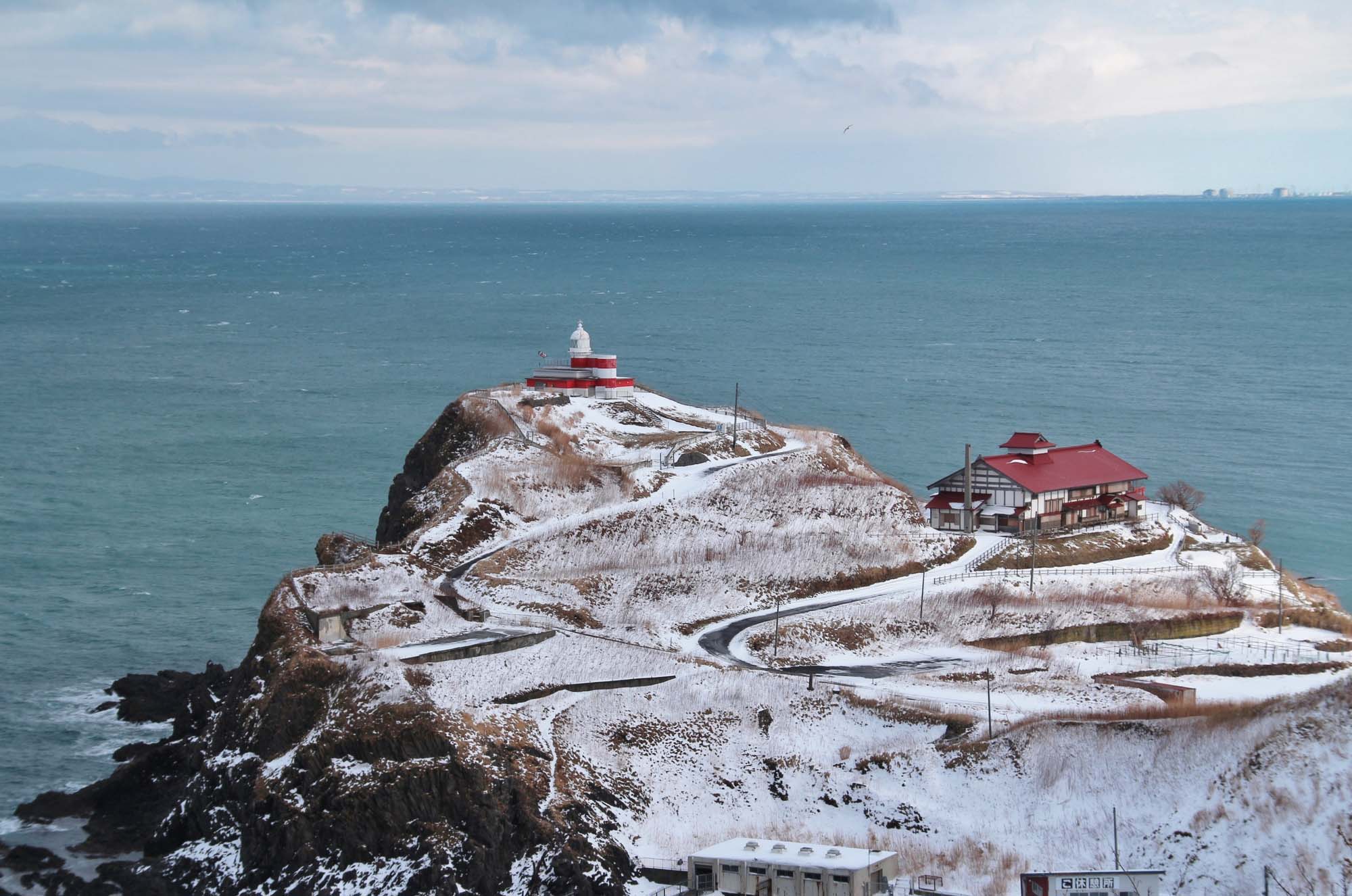
Aoyama Villa
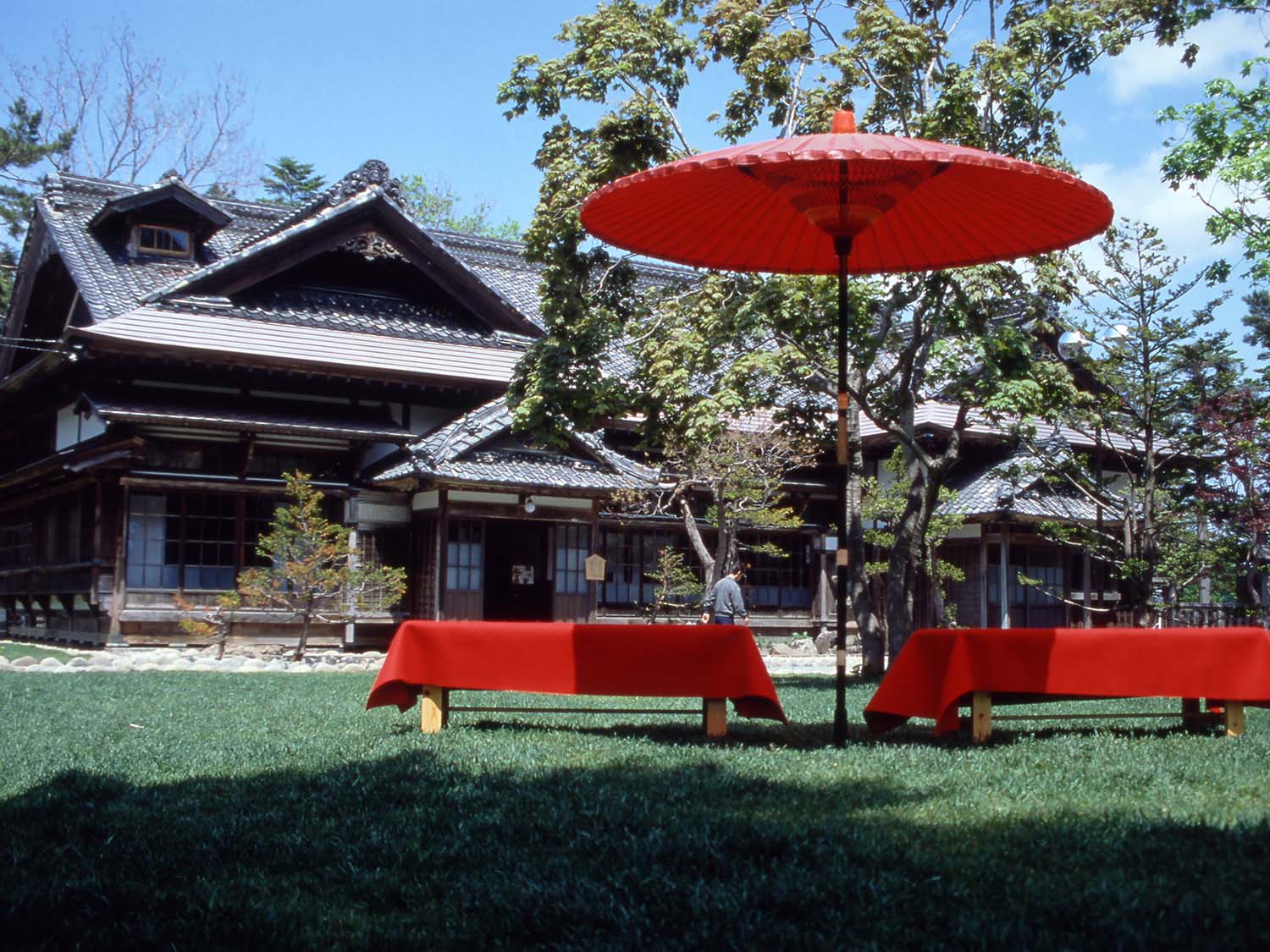
About a kilometer inland from the Herring mansion is the former Aoyama Villa (Kyu Aoyama Bettei / 旧青山別邸) (an outbound link), a luxurious villa of another herring tycoon family. The villa has been built on instruction from Masae Aoyama, a daughter to the herring mogul Masakichi Aoyama. She was inspired by a mansion of the Honma family she visited in Sakata, Yamagata prefecture, and wanted to build an even greater villa. The construction of the Aoyama Villa with Nenosuke Saito—the chief imperial carpenter—as the overseer started in 1917 and the work was finished 6 years later in 1923.
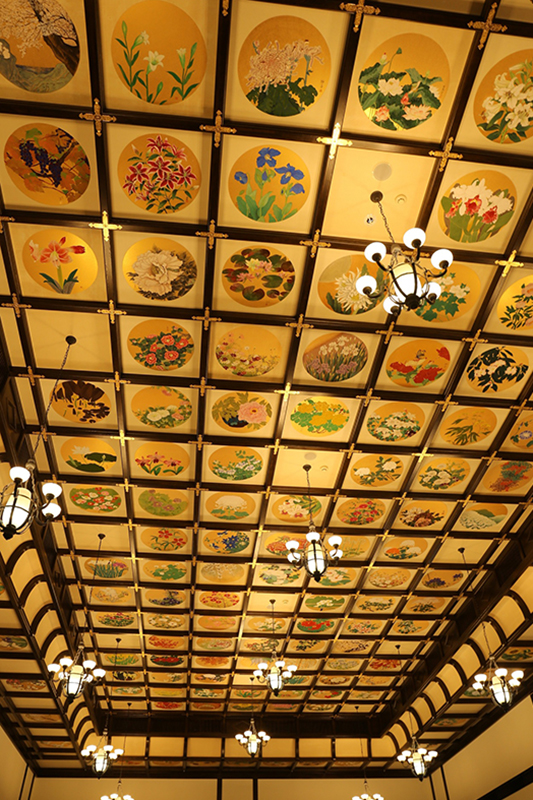
Masae and her father Masakichi were both art lovers and also did some art, such as calligraphy and Japanese paintings, themselves, so they wanted to build an artistically aesthetic villa. And this wooden villa is indeed a piece of art itself, from its ceiling made of Japanese cedar to the hardware fittings and paintings on the sliding doors and the corridor’s Nightingale floor (a floor that makes a chirping sound when it’s stepped on, uguisu-bari/鶯張り in Japanese). For these reasons the Former Aoyama Villa is registered as a tangible cultural property of Hokkaido and it’s definitely worth visiting while in Otaru. Also, the garden around the villa is a very beautiful Japanese-style garden with a pond and famous rhododendrons and hydrangeas. The Former Aoyama Villa and the area around it are also sometimes referred to as Otaru Kihinkan (小樽貴賓館), “the hall of the noble visitors to Otaru”. The Aoyama family also had a herring mansion in Otaru, but it has been moved to the Historical Heritage Village in Sapporo.
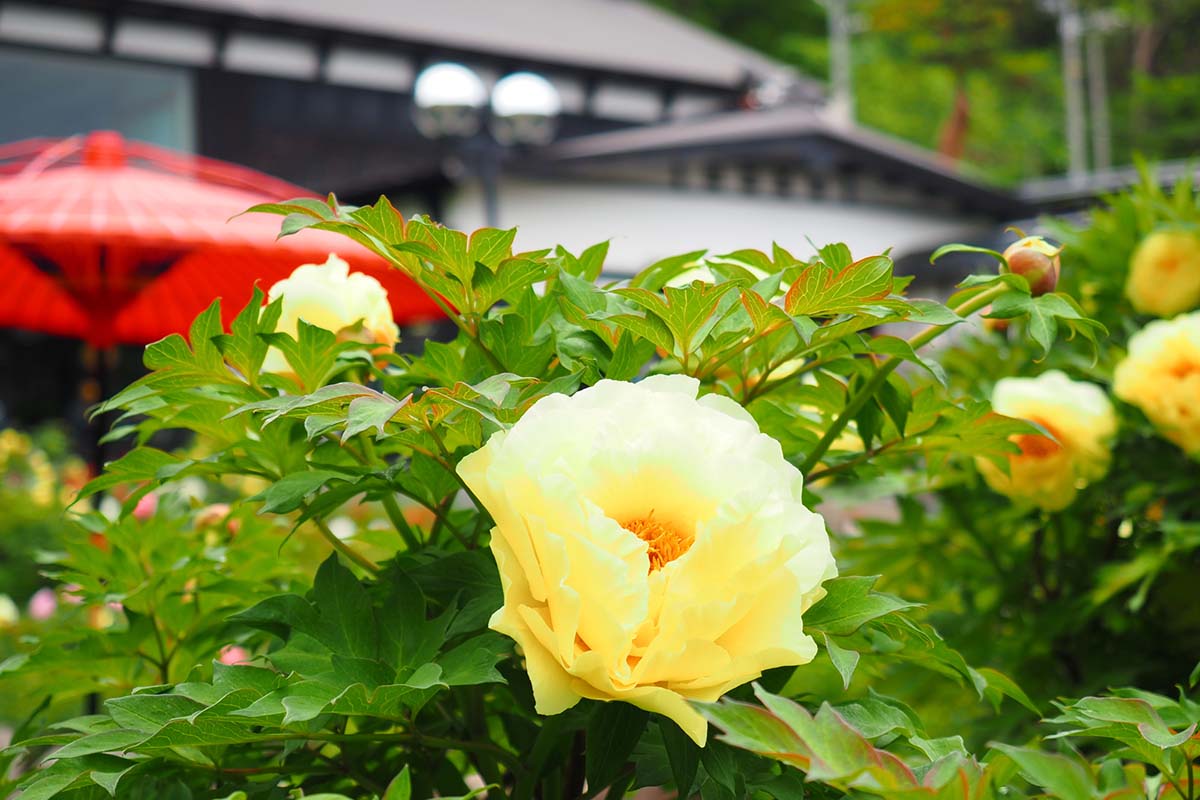
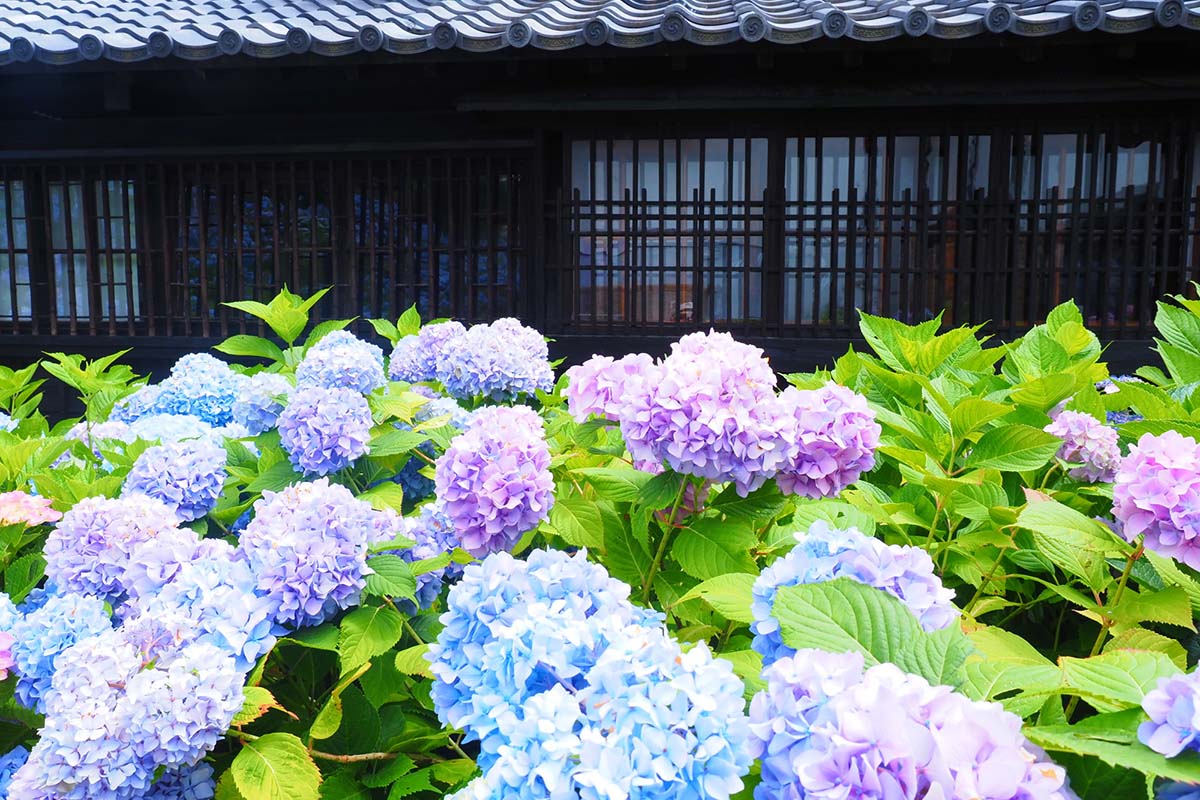
Ruins of Otamoy Amusement Park

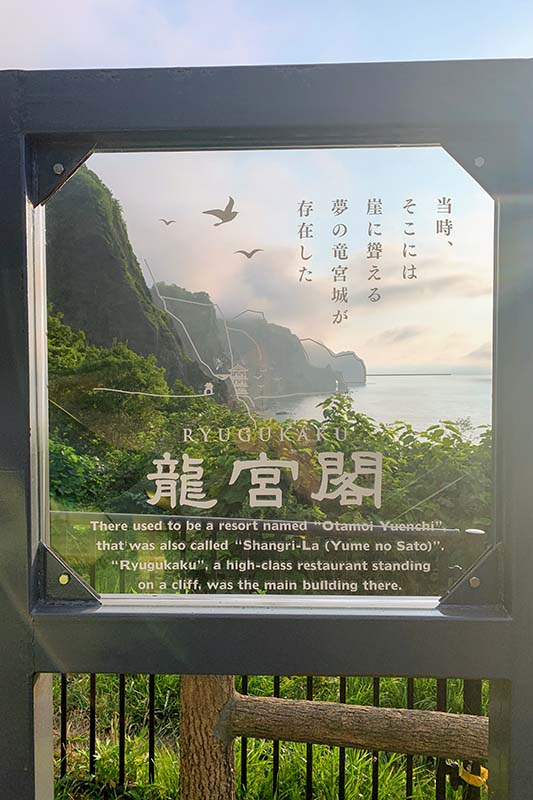
The last historic “building” we will introduce here is not just a single building but a group of buildings or rather their ruins at Otamoy beach. The ruins of now abandoned Otamoy Amusement Park (Otamoy yuenchi ato / オタモイ遊園地跡) (also called Shangri-La or Yume no Sato/夢の里) lay on top of a cliff about 7 km northwest of central Otaru. The amusement park was opened in 1936 during the pre-war economic boom and operated until 1952. There were plans to expand the park to a large holiday resort but the plans were put to a halt because of the war. A fire that burned down the restaurant Ryugukaku (龍宮閣) in 1951 sealed the fate of the amusement park and it was closed and left to ruin.
There is a danger that the cliffs around the ruins of the amusement park collapse, so today it is not possible to go and see the ruins from closeby. However, the Otaru sightseeing boat ‘Aobato’ operates the Otamoy route, and the ruins of Otamoy Amusement Park can be seen from the boat. In recent years, there have been discussions about repairing, rebuilding, or redevelopment of the old amusement park area into ‘Otamoy terrace’ but the plans are still open.
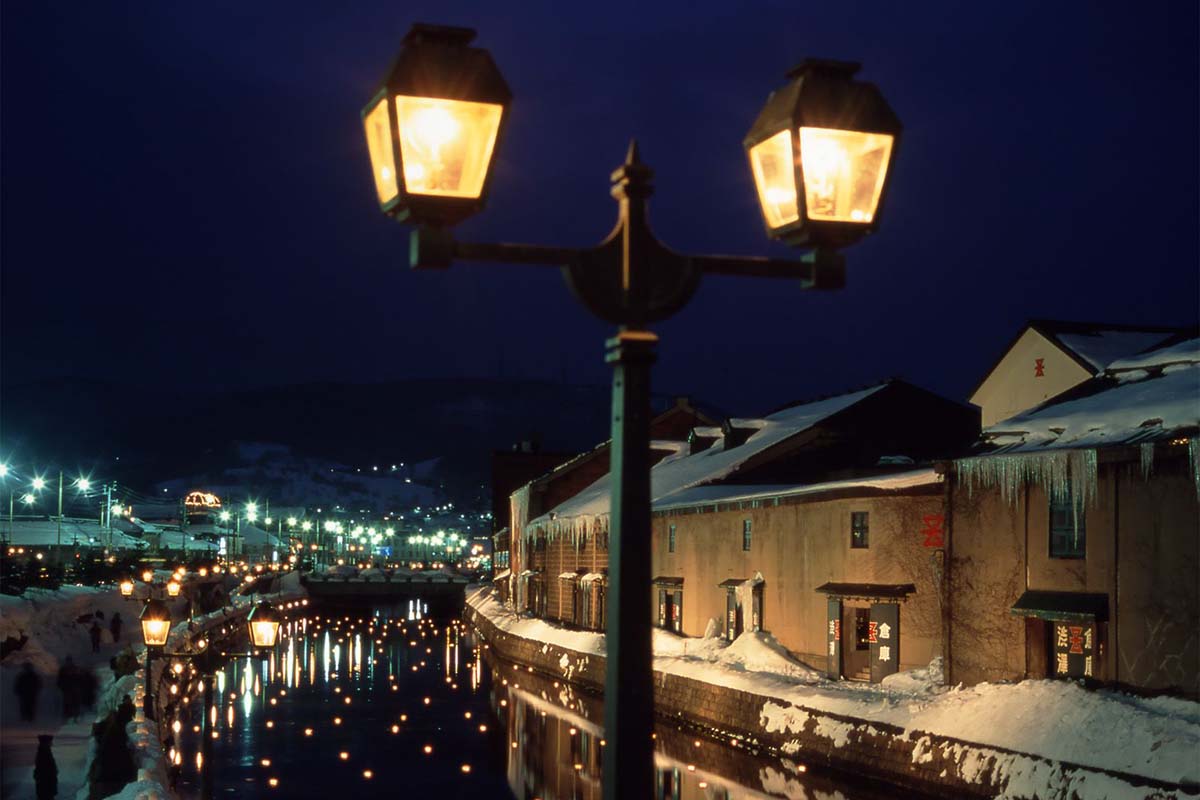
In this blog column we have introduced some of the most famous historic buildings in Otaru but there is of course more to see and experience than what we have been able to tell you here. If you think that you want to spend some time getting to know Otaru through its historical buildings next time you travel to Hokkaido, just contact us, and we can make together the best tailor-made travel plan for you.
